Damascus – Bab al-Saghir Cemetery دمشق – مقبرة الباب الصغير
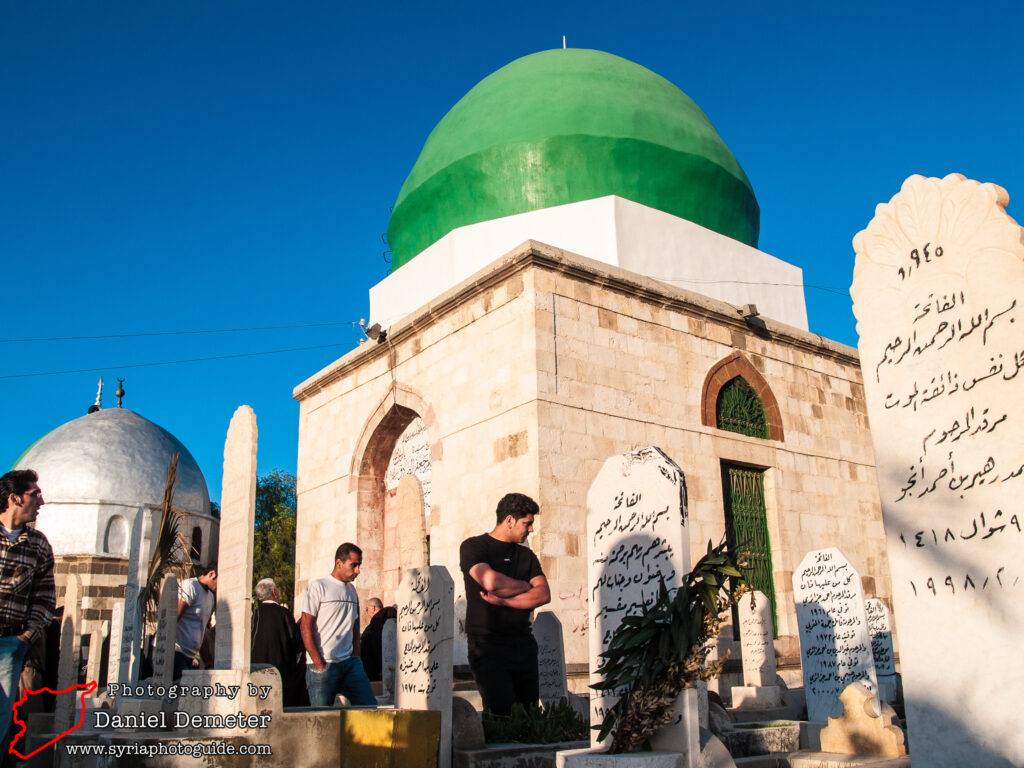
Bab al-Saghir Cemetery (مقبرة الباب الصغير), located south of the old city, is the most noteworthy of the many historic cemeteries in Damascus (دمشق). This cemetery has been in use since the beginning of the Umayyad period, and several tombs are attributed to prominent figures in the early history of Islam. The attribution of these tombs is largely by popular tradition, often unsupported by any physical evidence or historical documentation. Nonetheless, it is an important place of pilgrimage, particularly for Shia Muslims.
Numerous tombs are attributed to relatives, descendants and companions of Mohammed (محمد). Most prominent of these is the tomb of Sukayneh (سكينة), the daughter of Hussein (حسين), the granddaughter of Ali (علي), and the great granddaughter of Mohammed (محمد). Her reputed tomb is housed in a twin-domed shrine in the central-eastern section of the cemetery. The coffin has been dated to the early 12th century. South of this is another domed tomb popularly believed to be that of Fatimeh (فاطمة), the daughter of Mohammed (محمد) and wife of Ali (علي). Both of these associations seem unlikely, but the tombs receive a steady stream of pilgrims from abroad.
Just a short walk to the northwest is the tomb of Bilal Bin Rabah (بلال بن رباح), one of the closest companions of Mohammed (محمد). Bilal (بلال), who was of African descent, was born a slave in Mecca in 580. He was one of the earliest followers of Islam, converting to the faith against the wishes of his master. He was among the emancipated slaves freed by Abu Bakr (أبو بكر) and became an important figure among the followers of Mohammed (محمد), holding the position of treasurer. Bilal (بلال) is widely considered to be the first muezzin in Islam. He was known for having a particularly beautiful voice, and for this reason he was chosen to lead the call to prayer. His respected stature is often cited by Muslims as evidence of the importance of pluralism and racial equality in the foundations of Islam.
Several tombs in the cemetery have impressive façades facing the street immediately to the west. These tombs date back to the Mamluk period and feature alternating bands of black and white stone and other decorative elements. Most noteworthy of these is a twin-domed tomb with a tall entrance portal featuring muqarnas. Across the street is al-Turbeh al-Jiaaniyeh (التربة الجيعانية), the tomb of a 14th century Mamluk governor of Damascus (دمشق). Also nearby, to the northeast of the cemetery, is the Ayyubid-era Jarah Mosque (جامع جراح), one of the earliest congregational mosques built beyond the walls of the old city. It is built around a rectangular courtyard, with a square minaret on the northern side and prayer hall to the south. It was constructed under Sultan al-Ashraf Musa (الأشرف موسى) in 1233 and rebuilt in 1250.
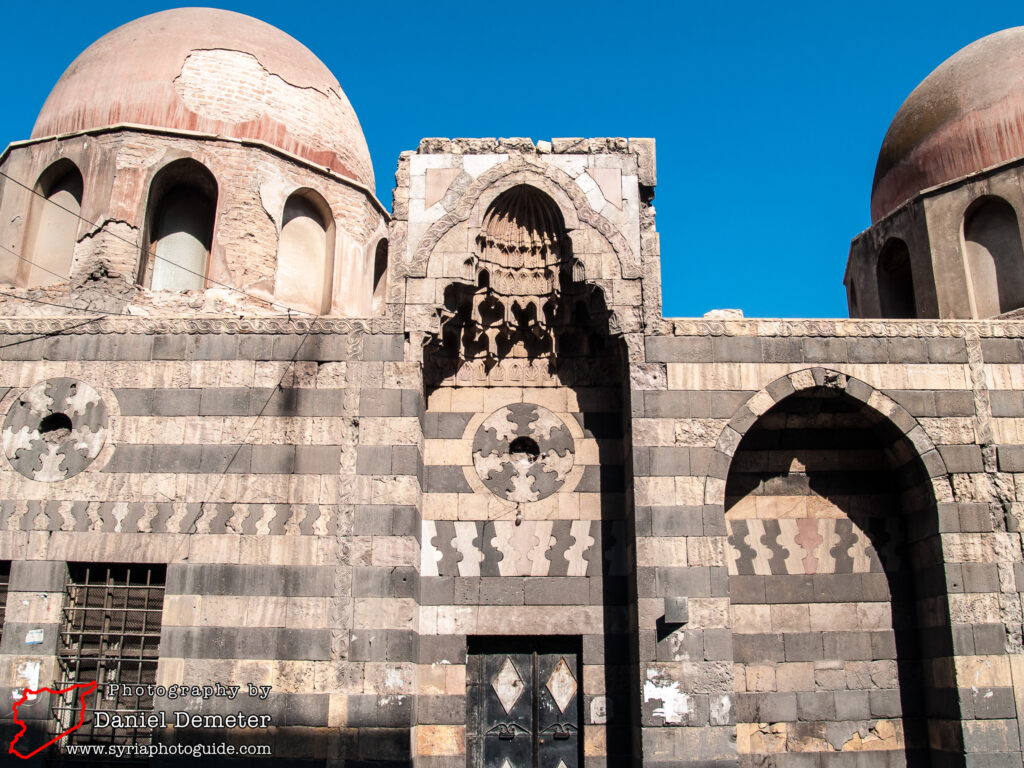
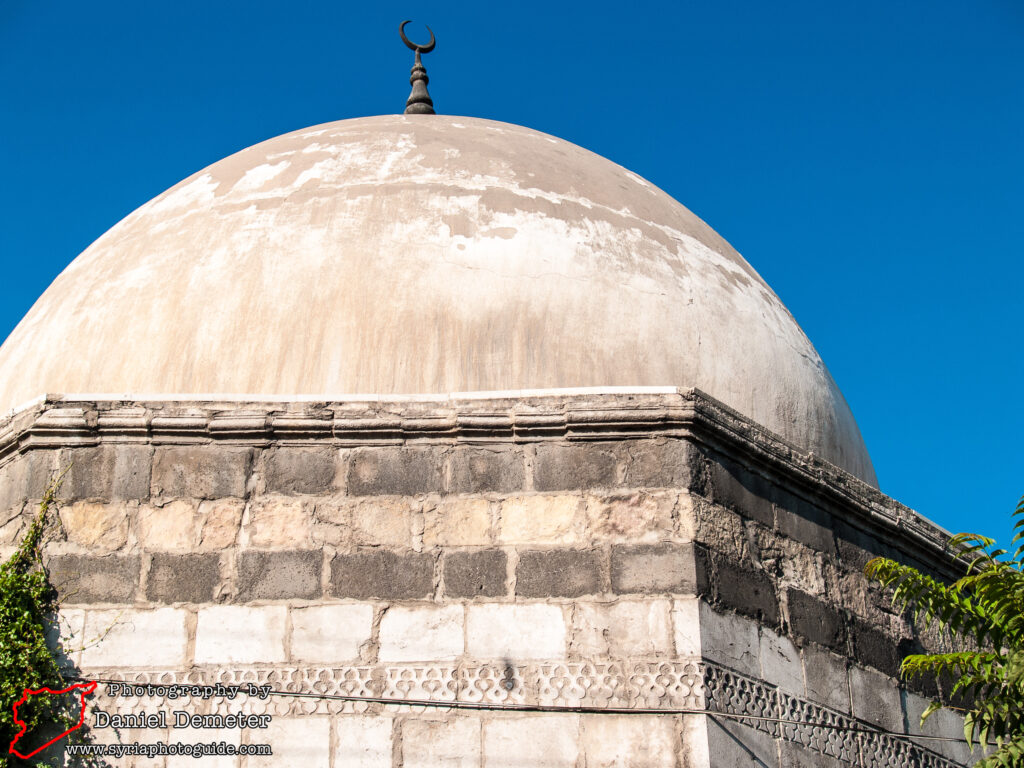
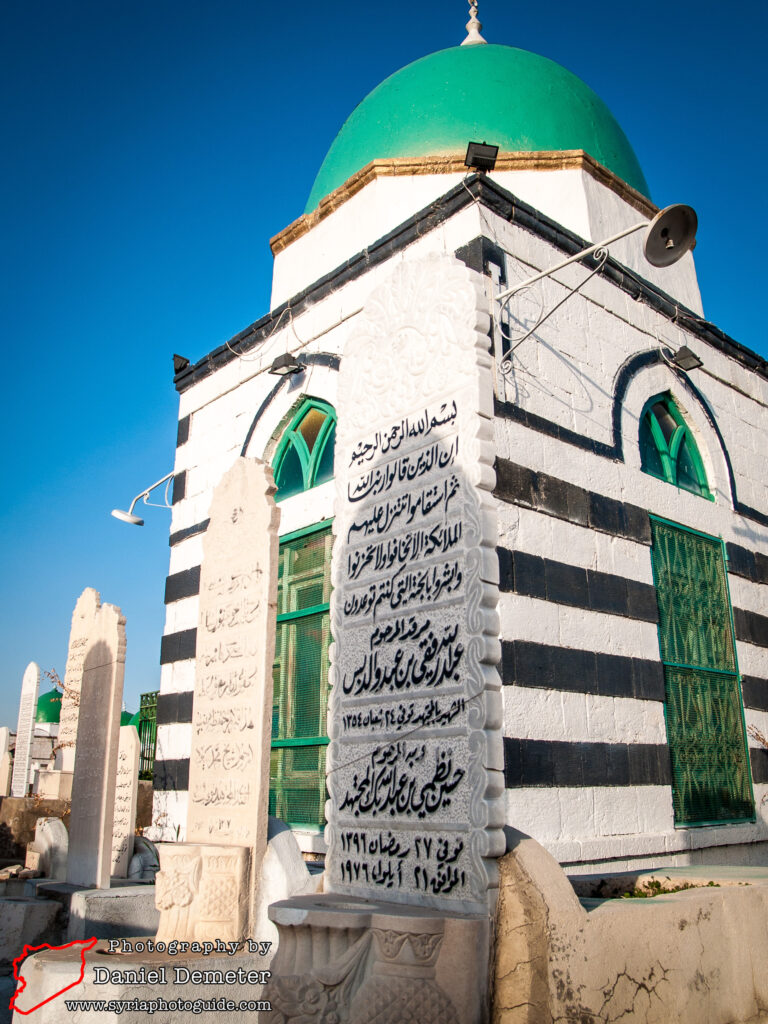
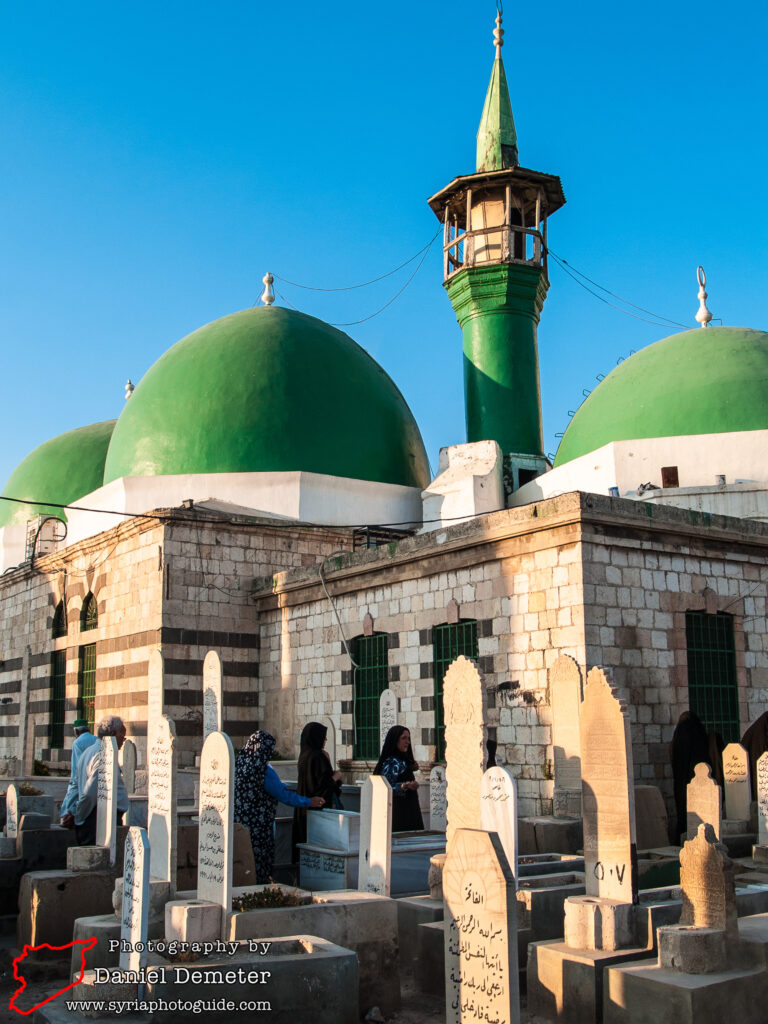
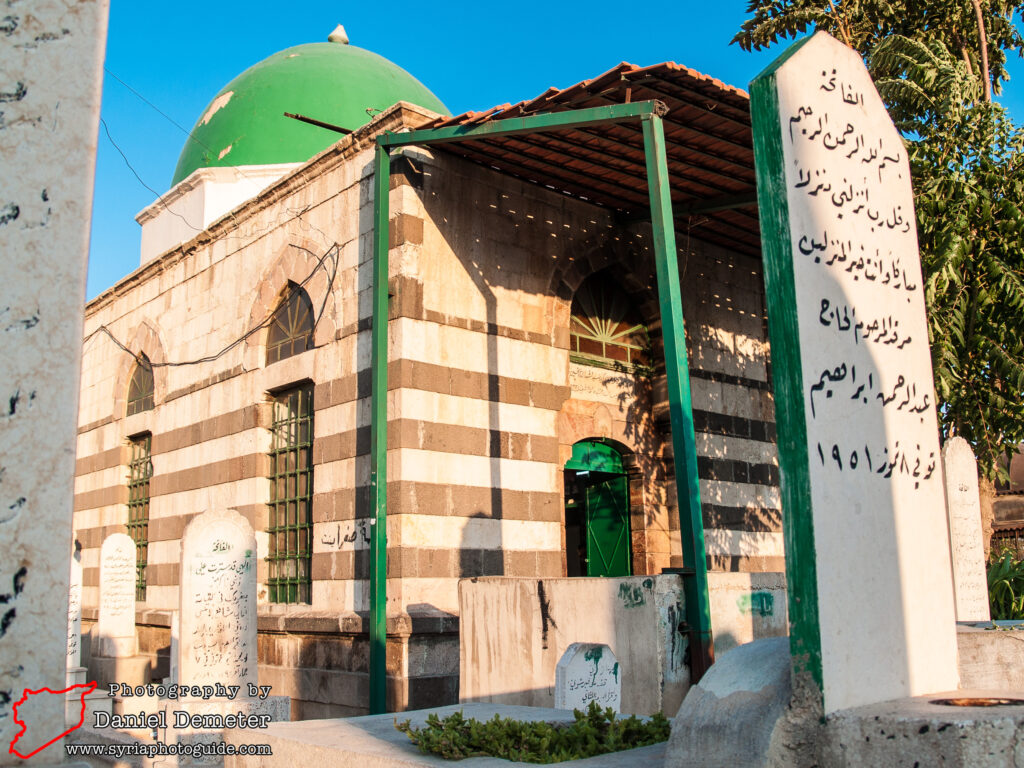
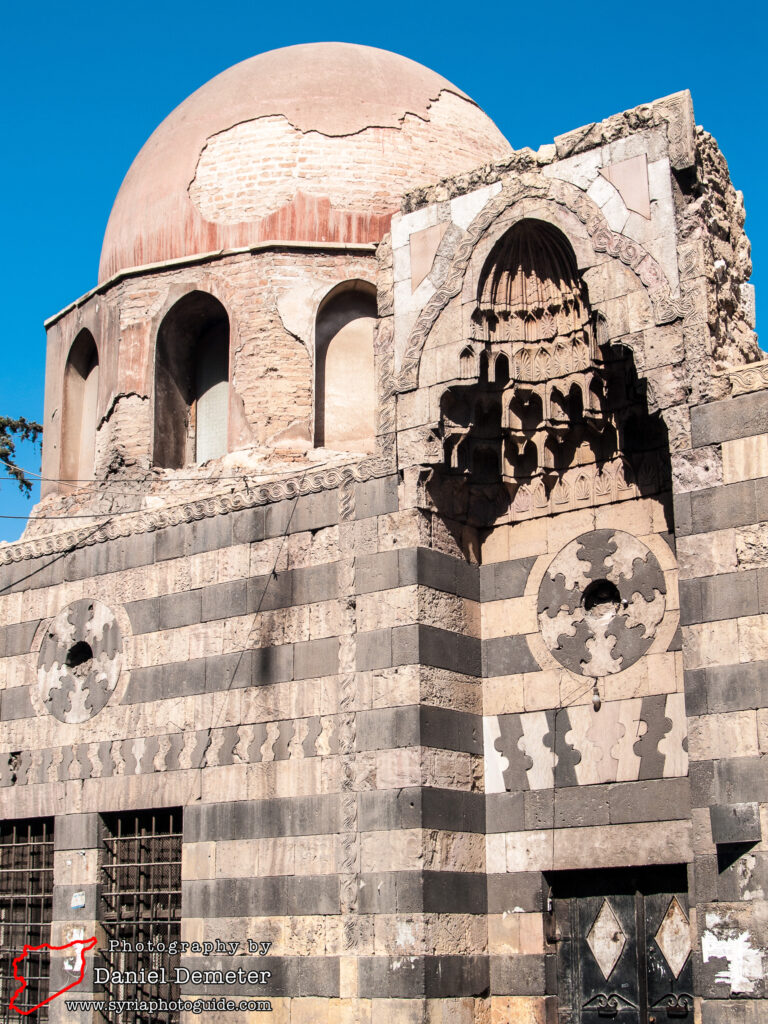
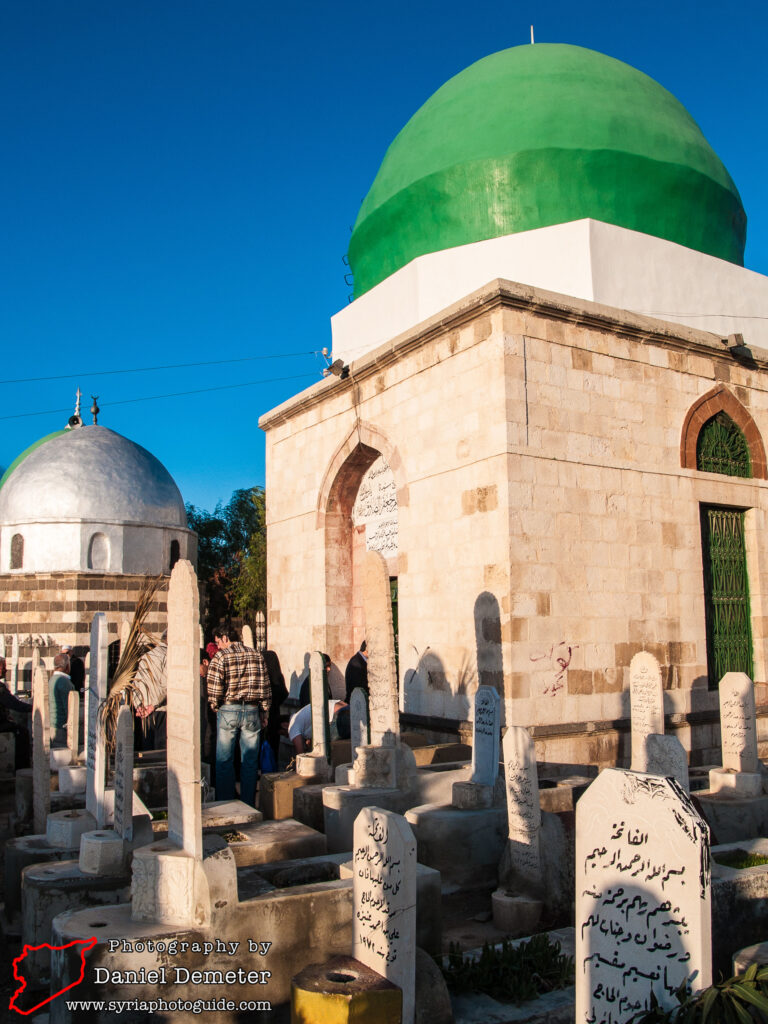
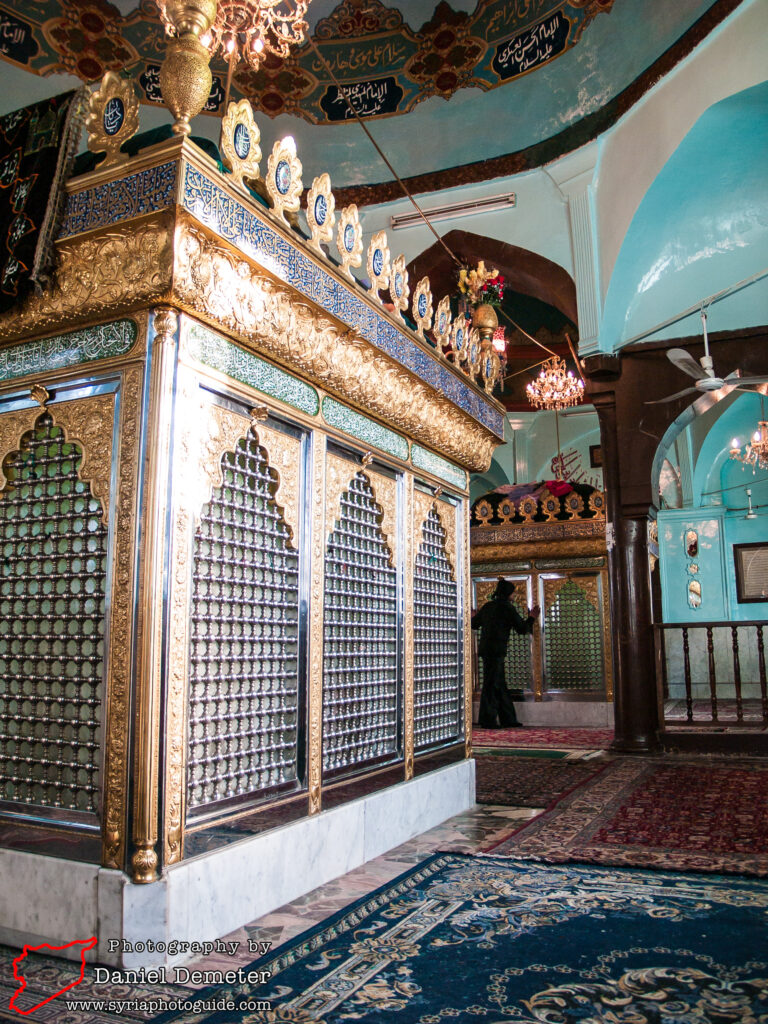
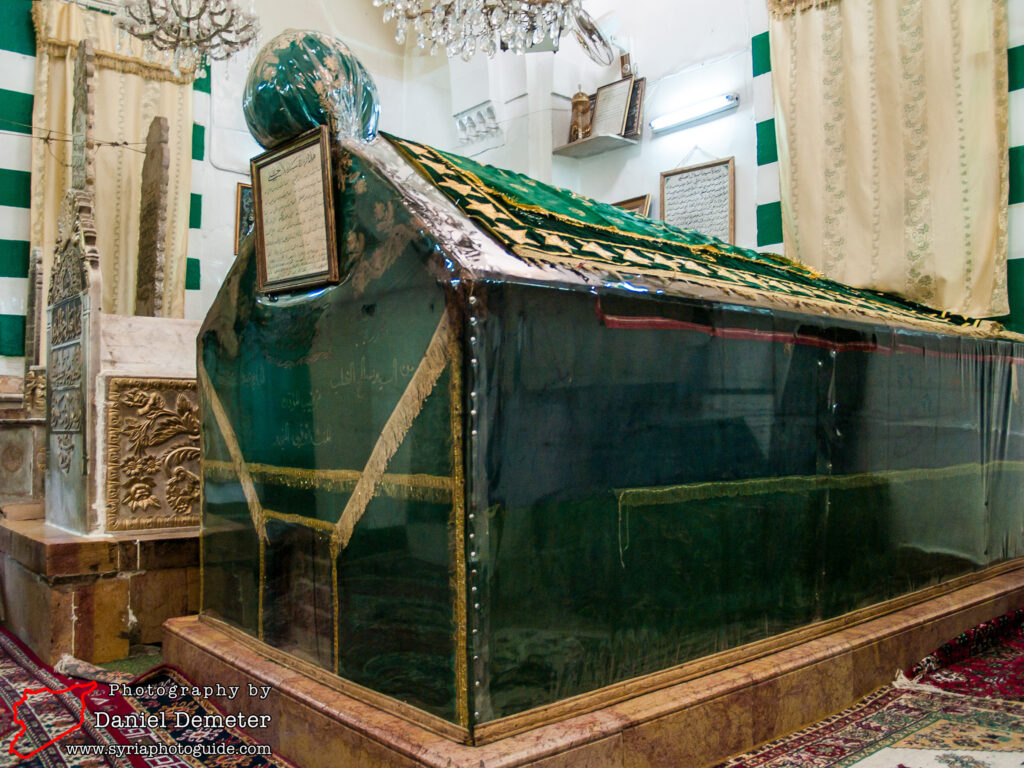
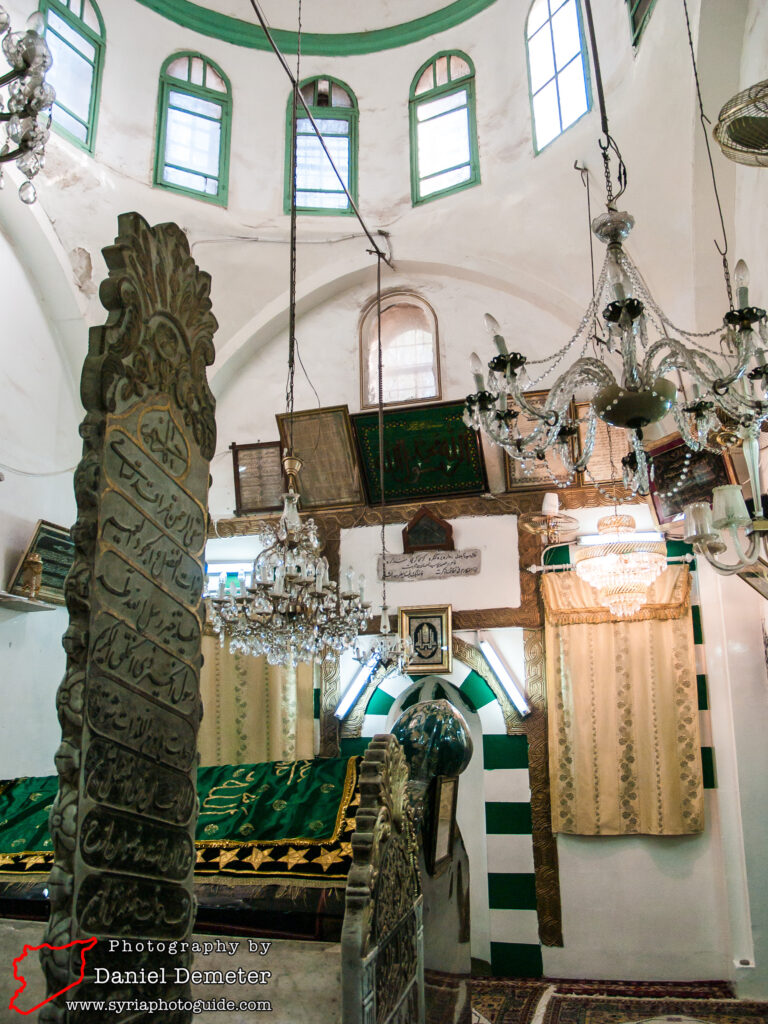
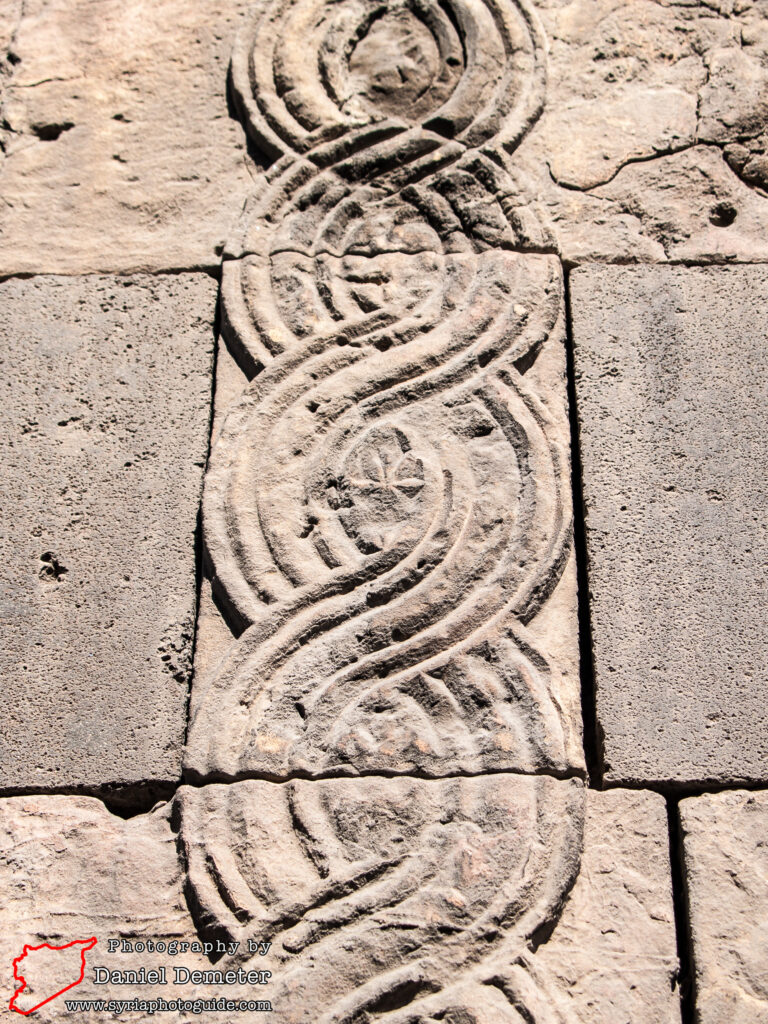
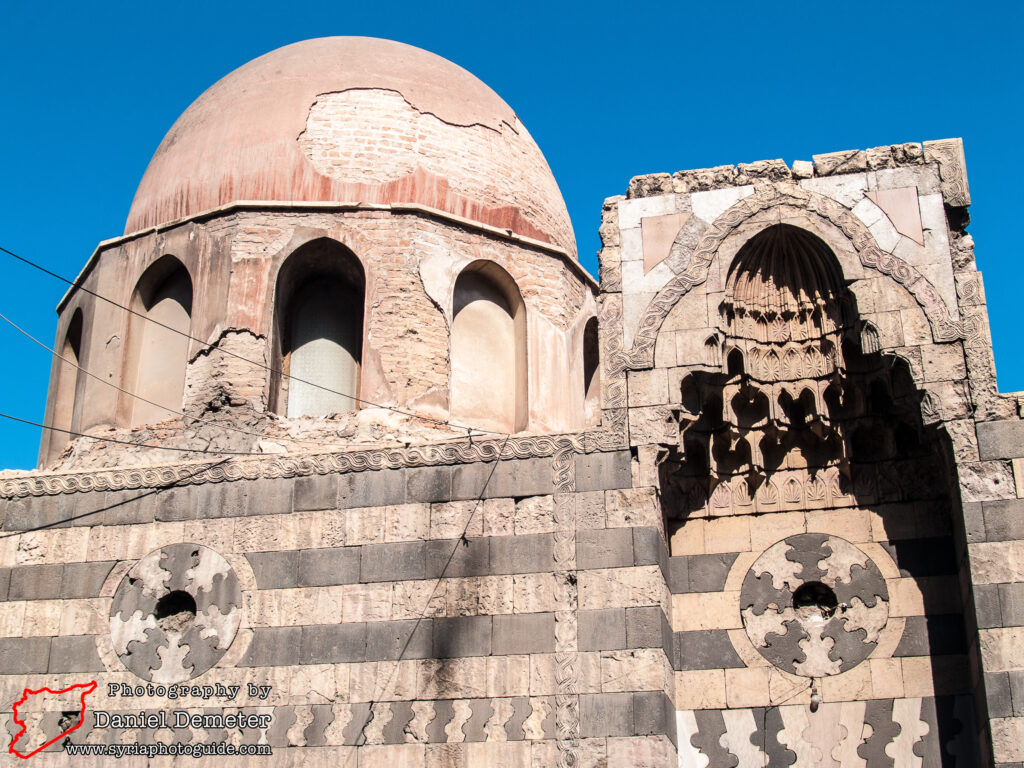
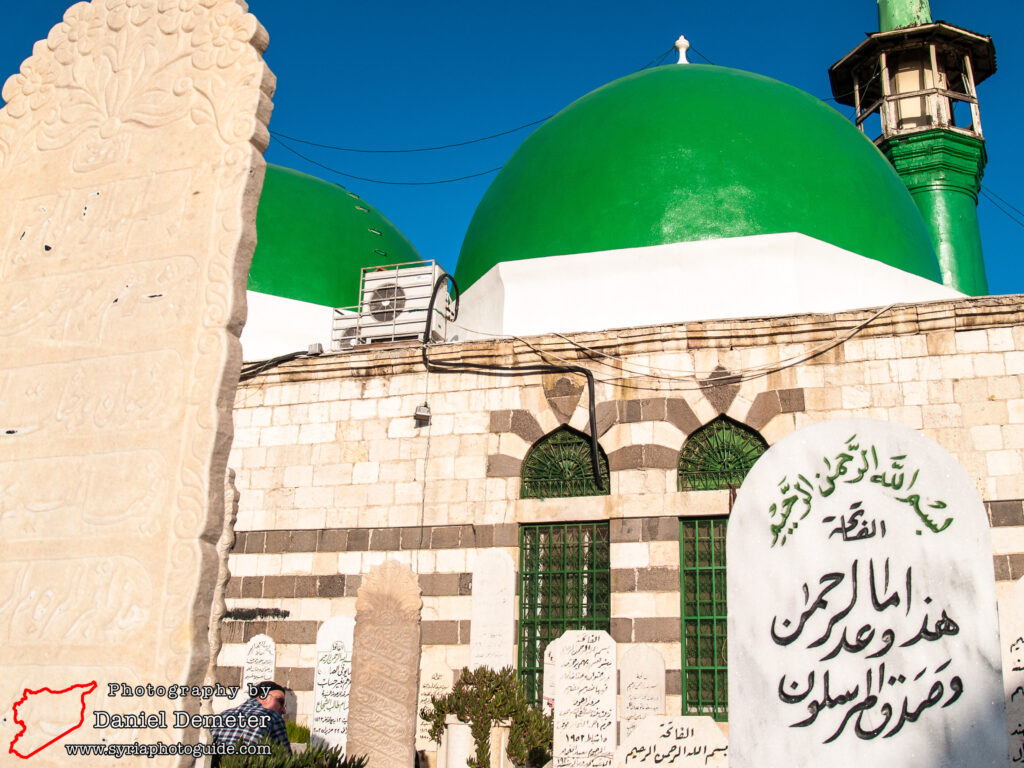
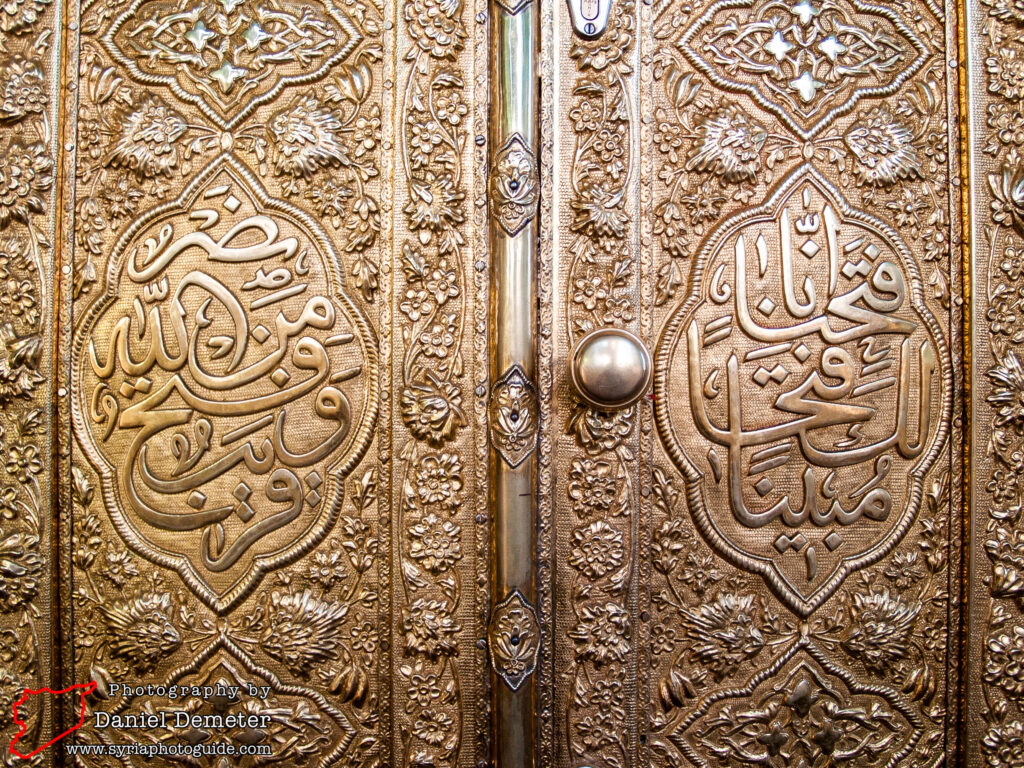

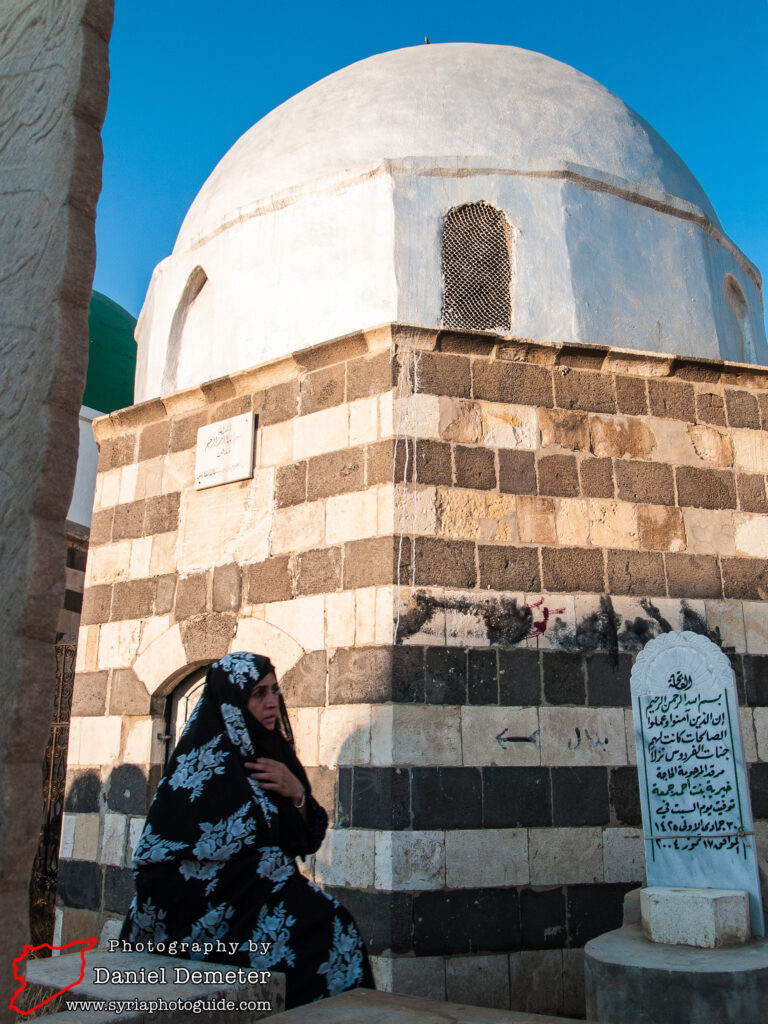
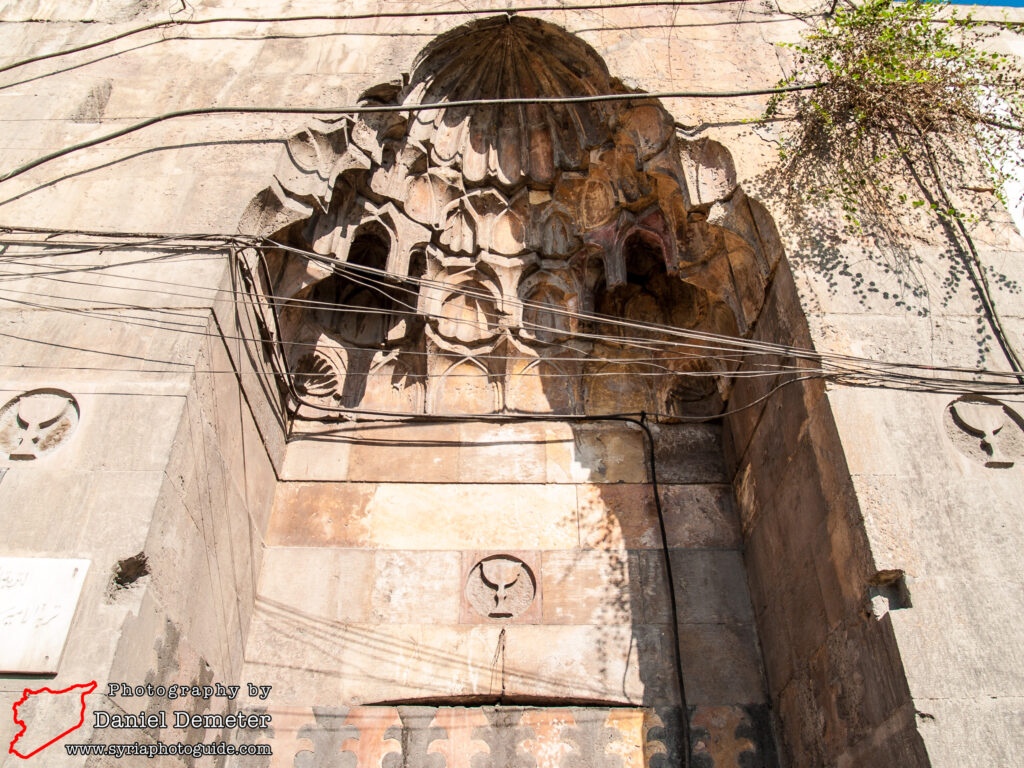
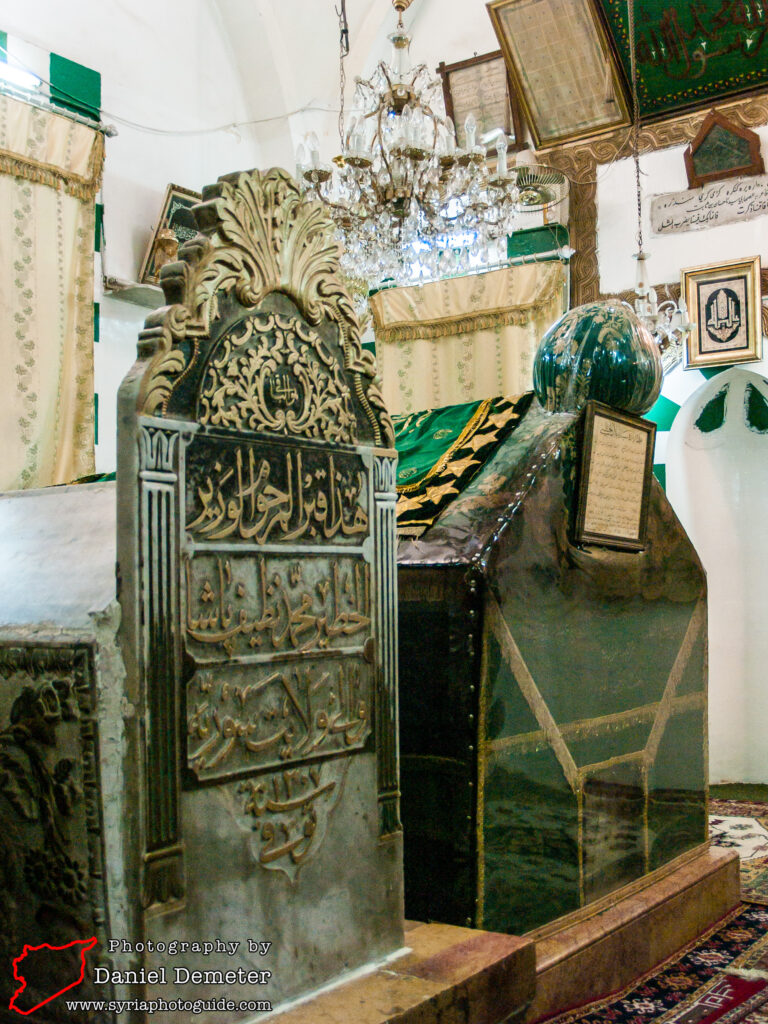
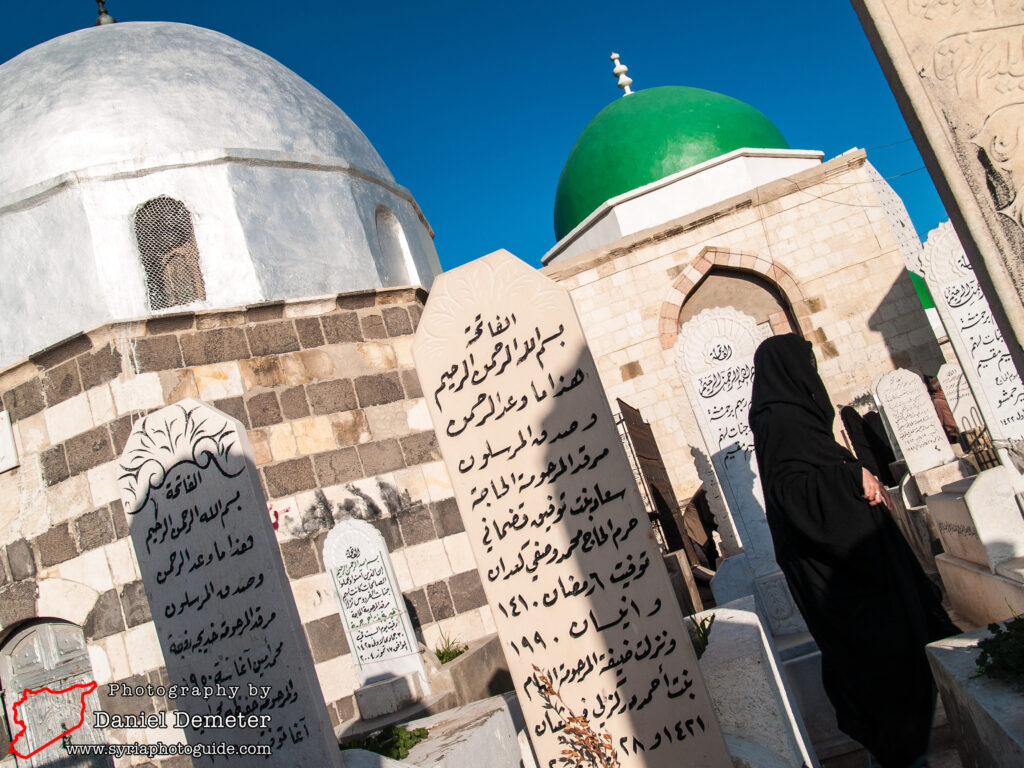
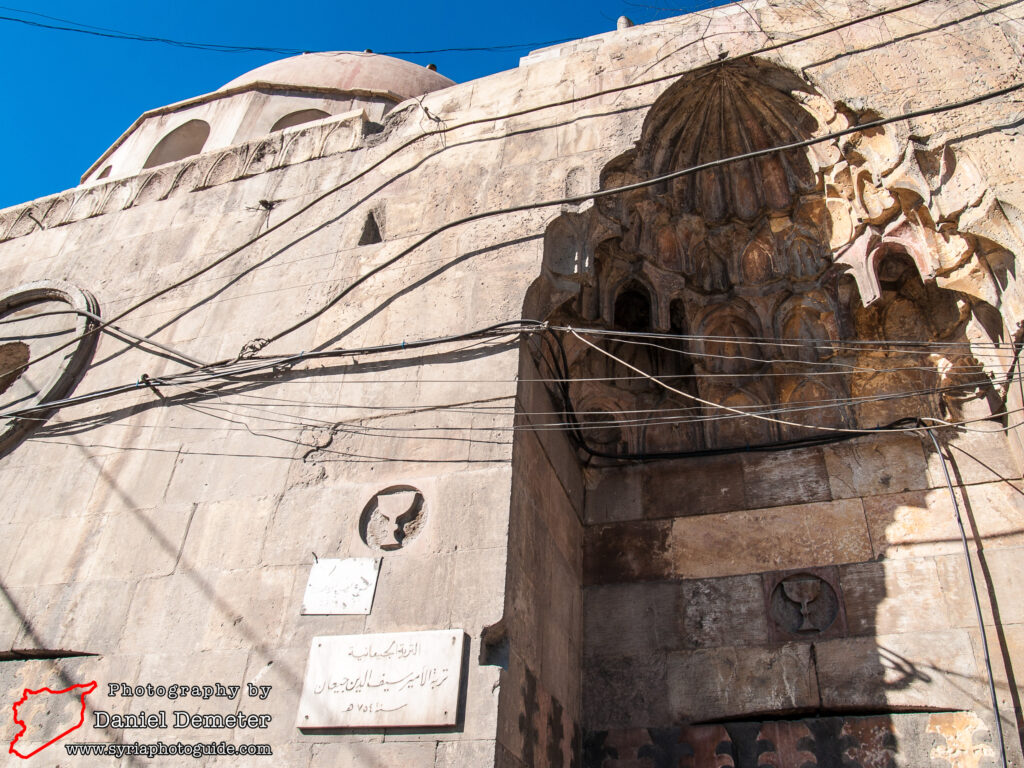
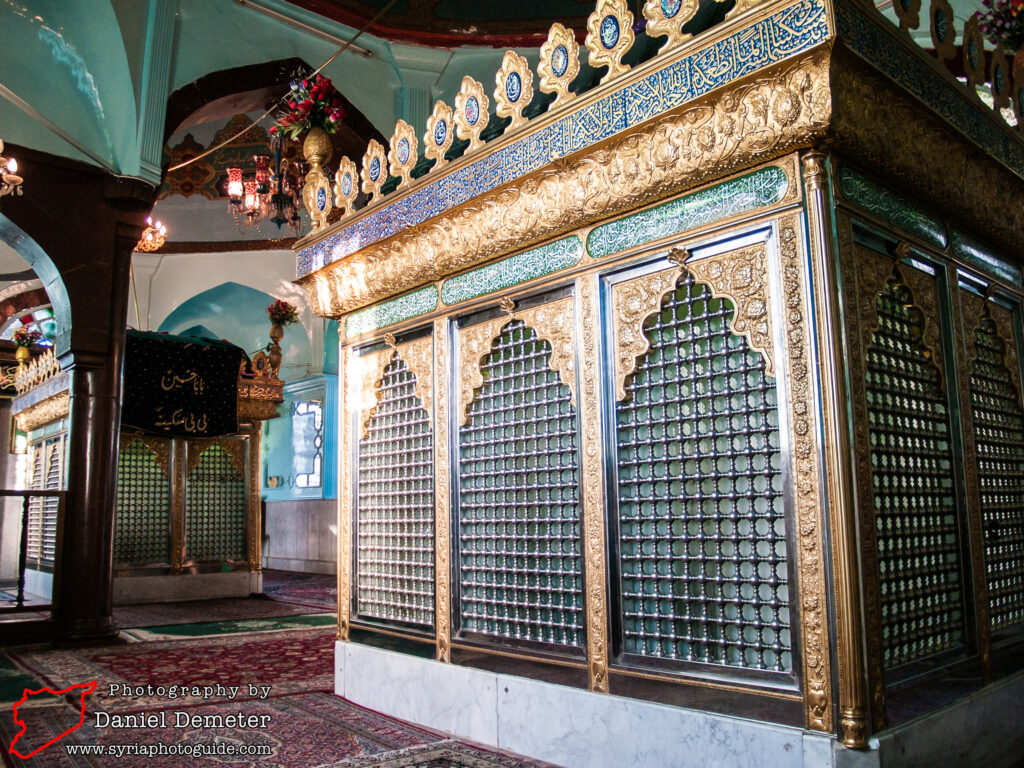
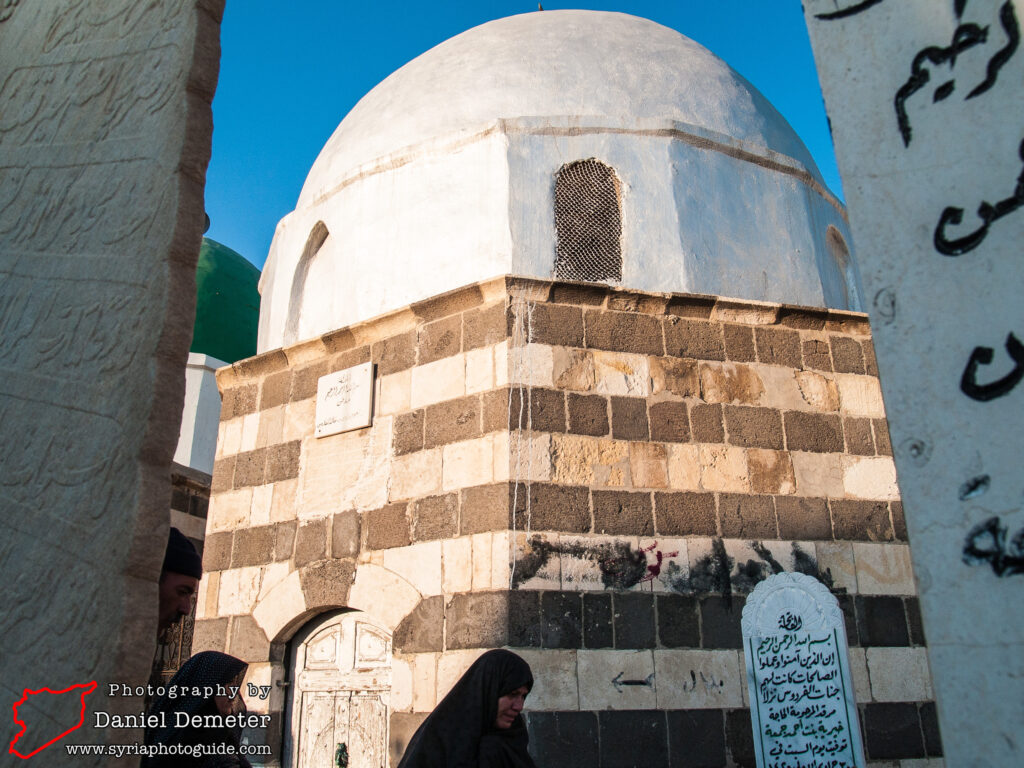
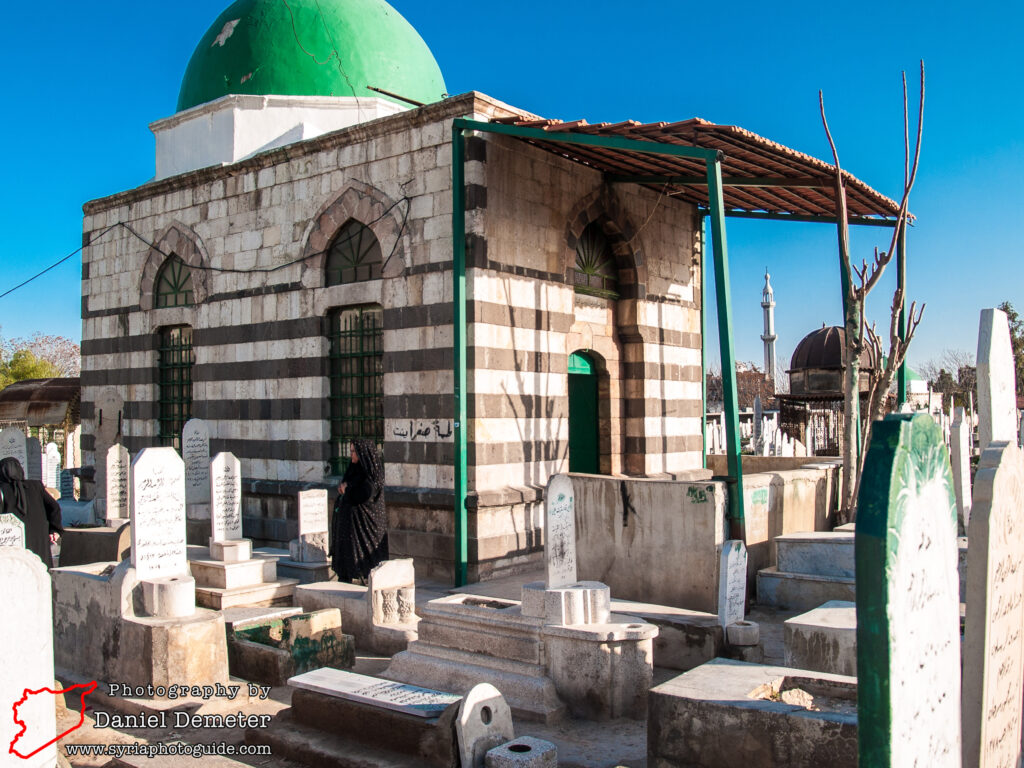
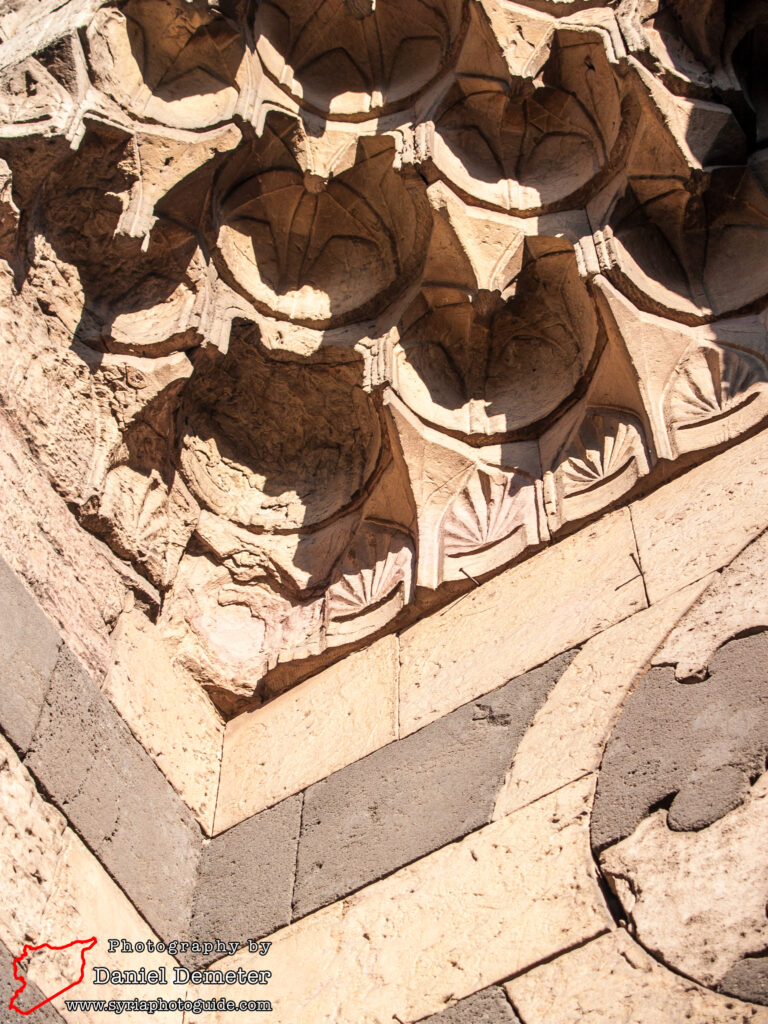
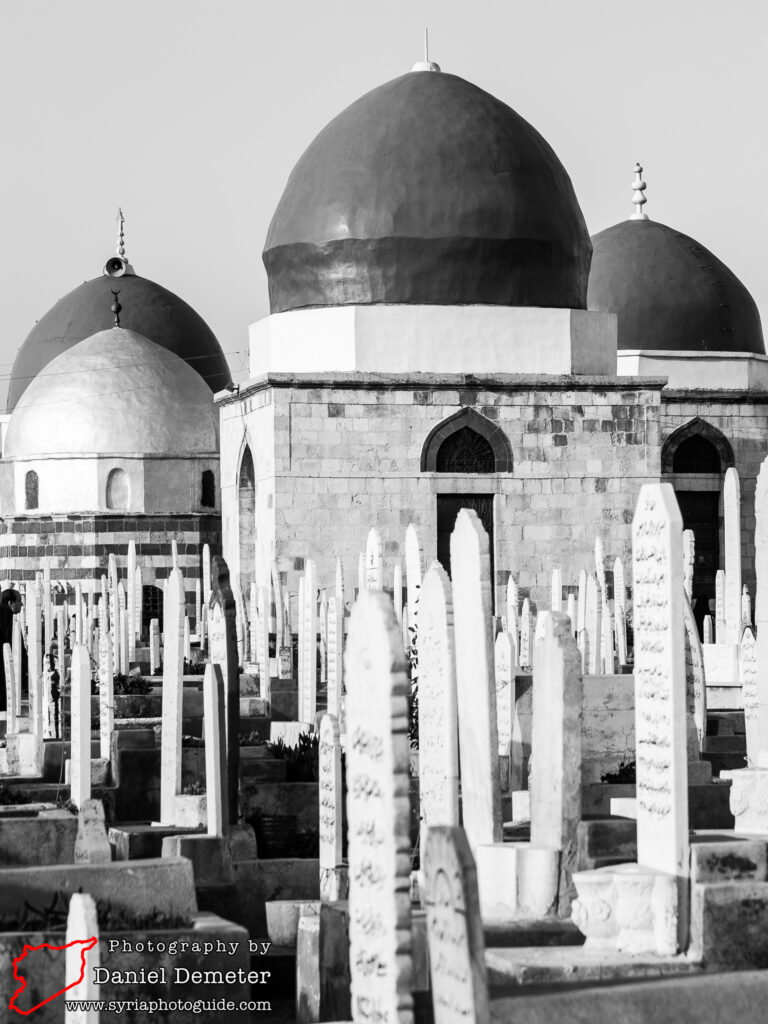

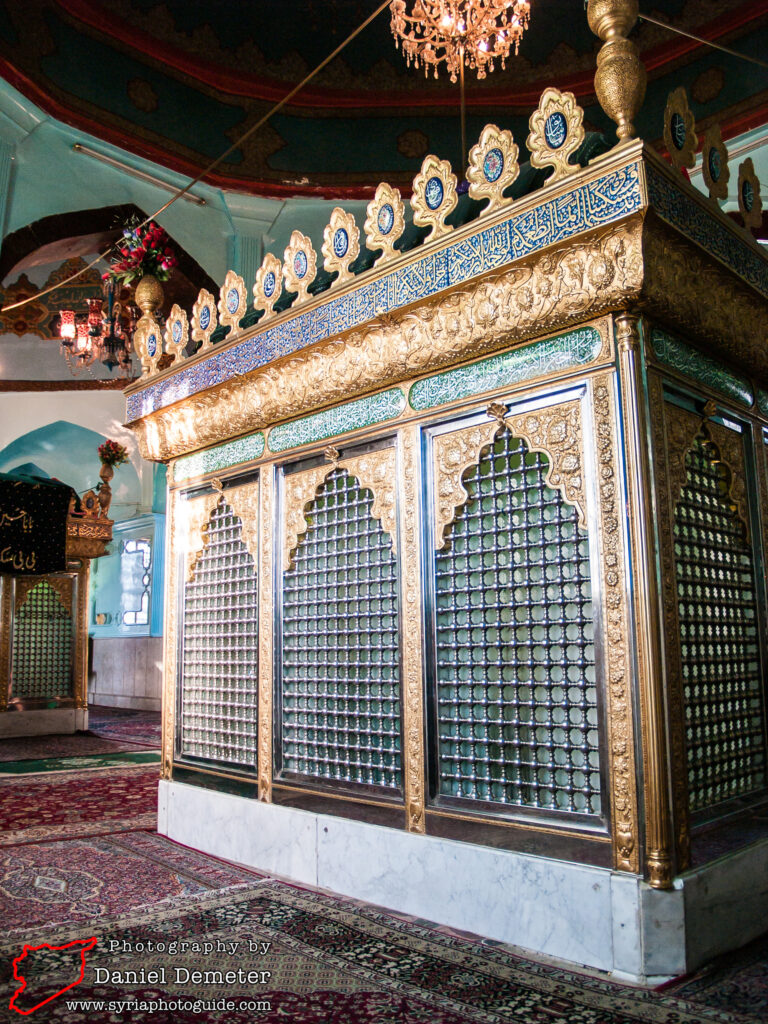
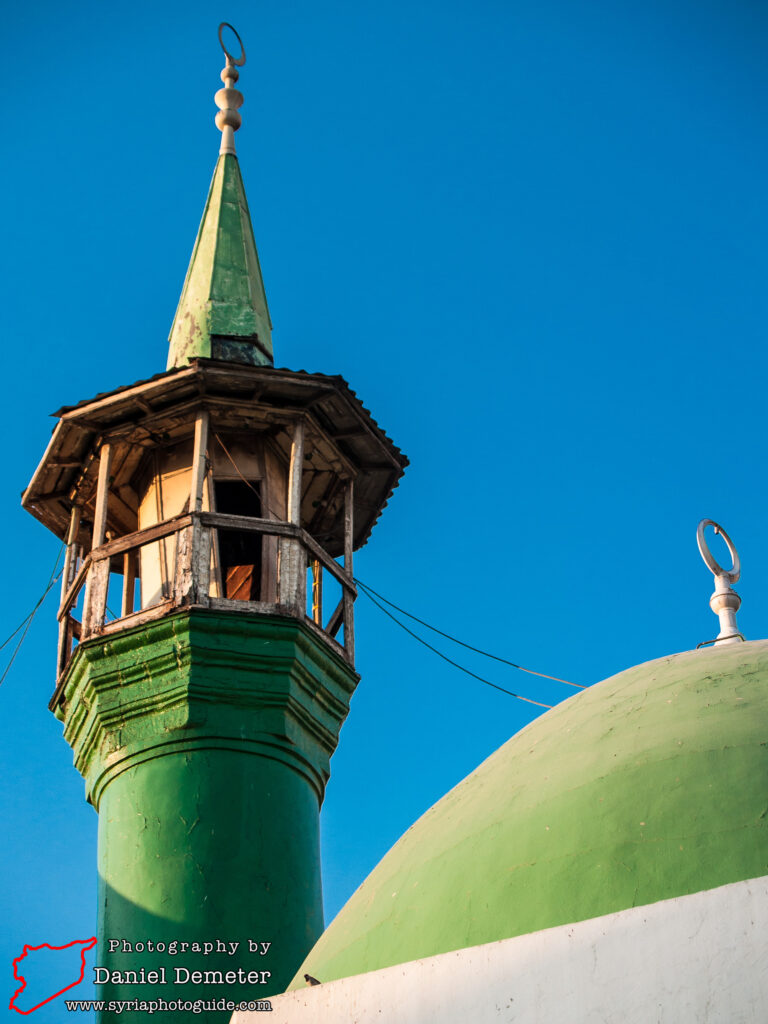
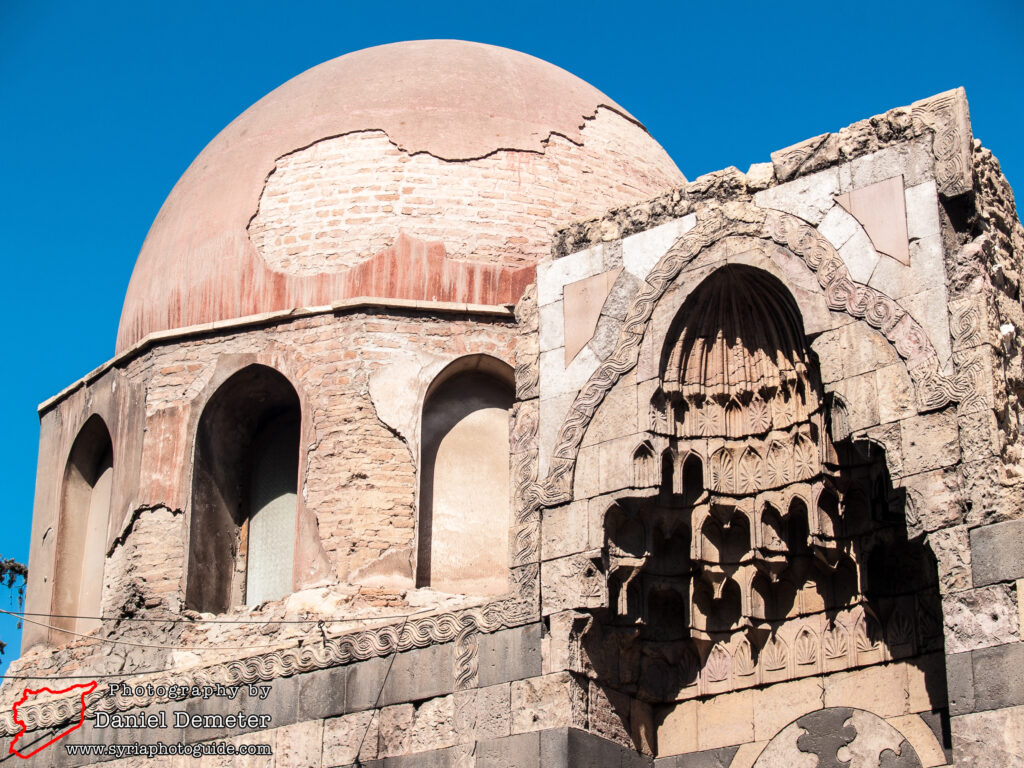
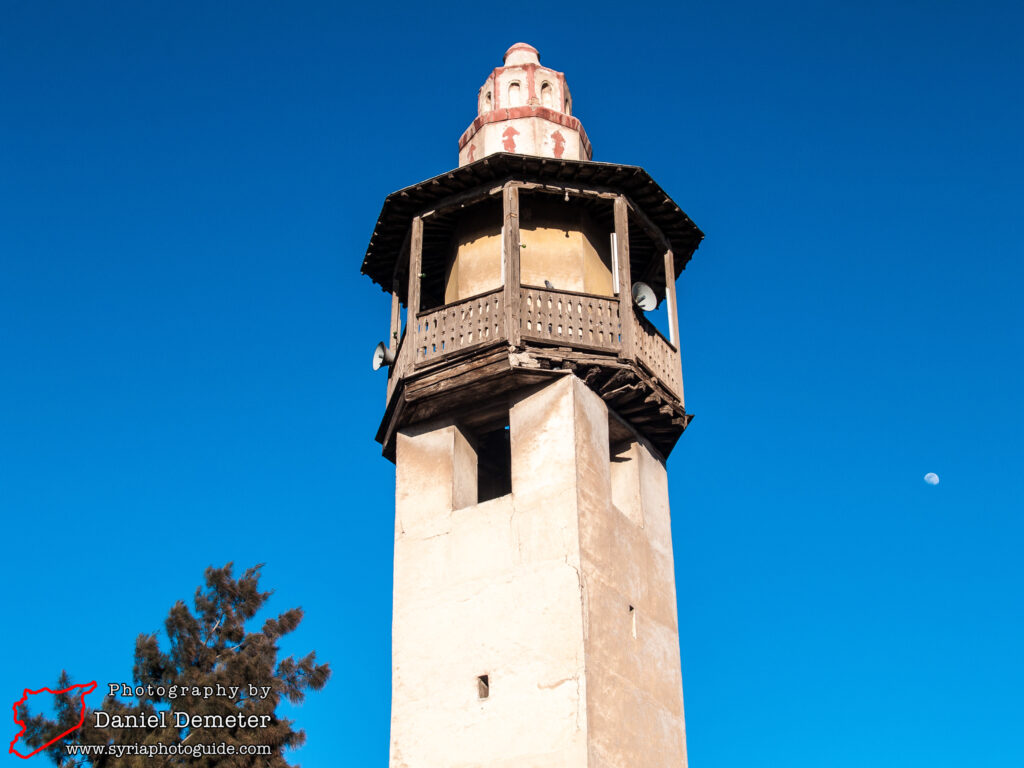
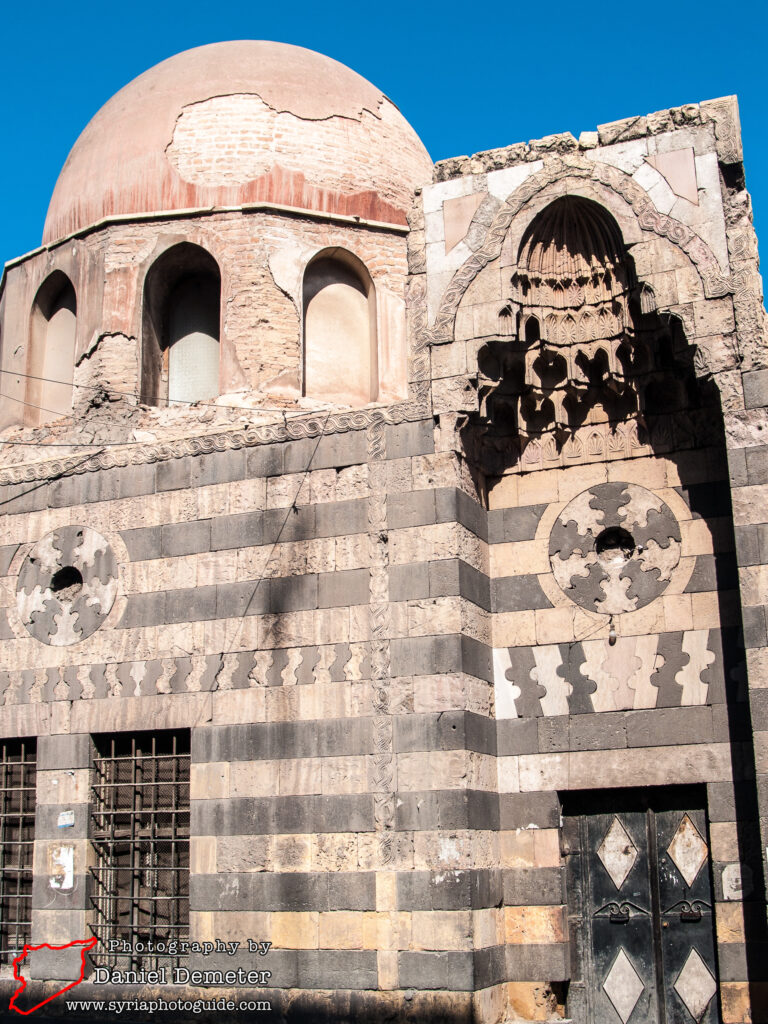
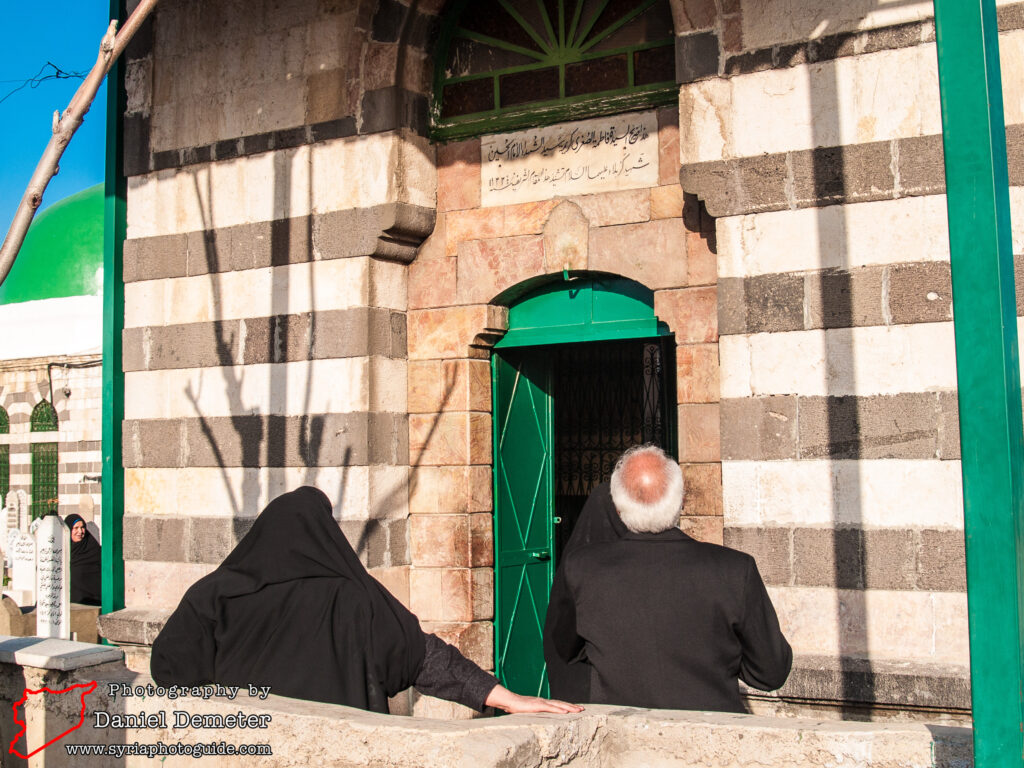
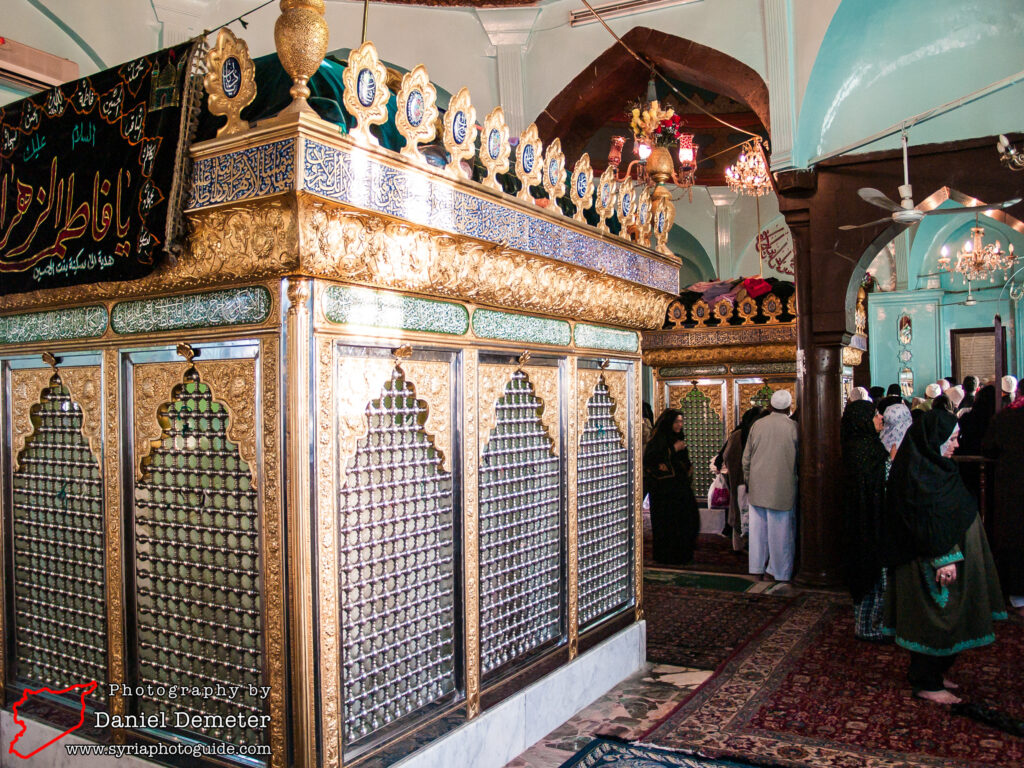
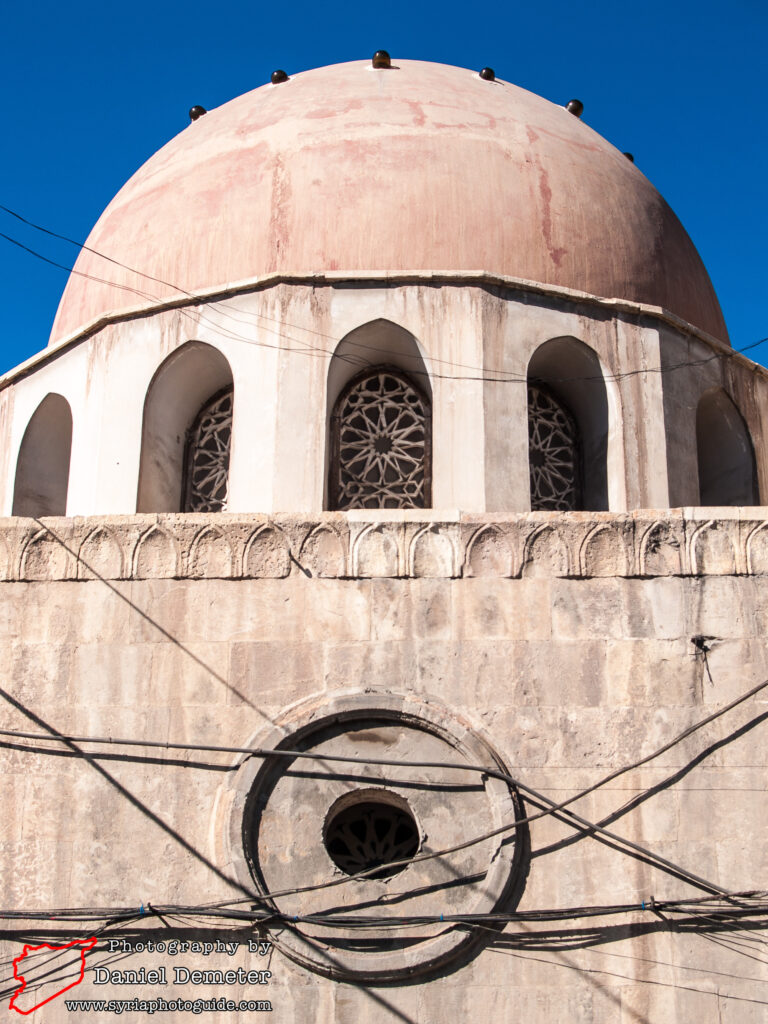
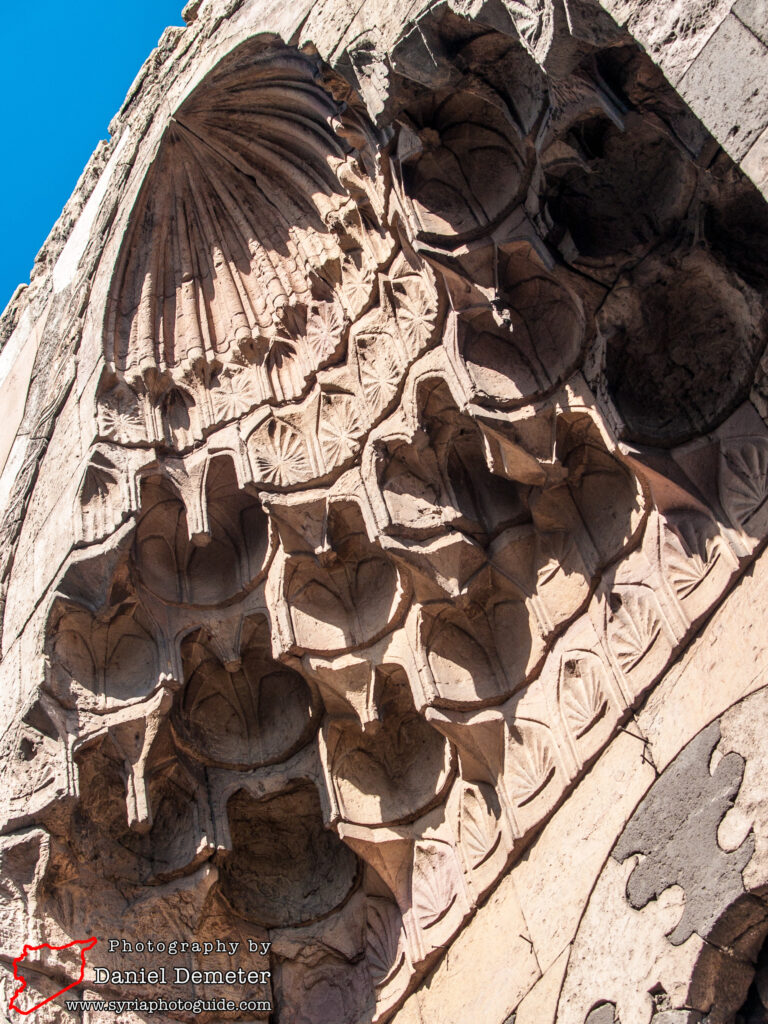
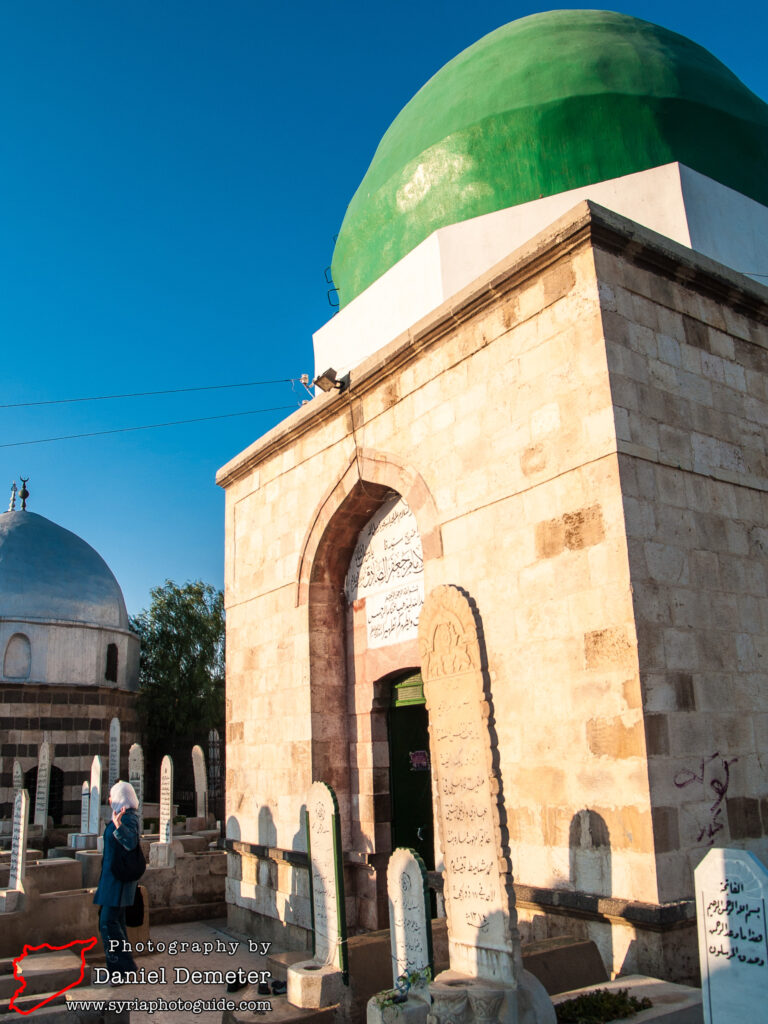
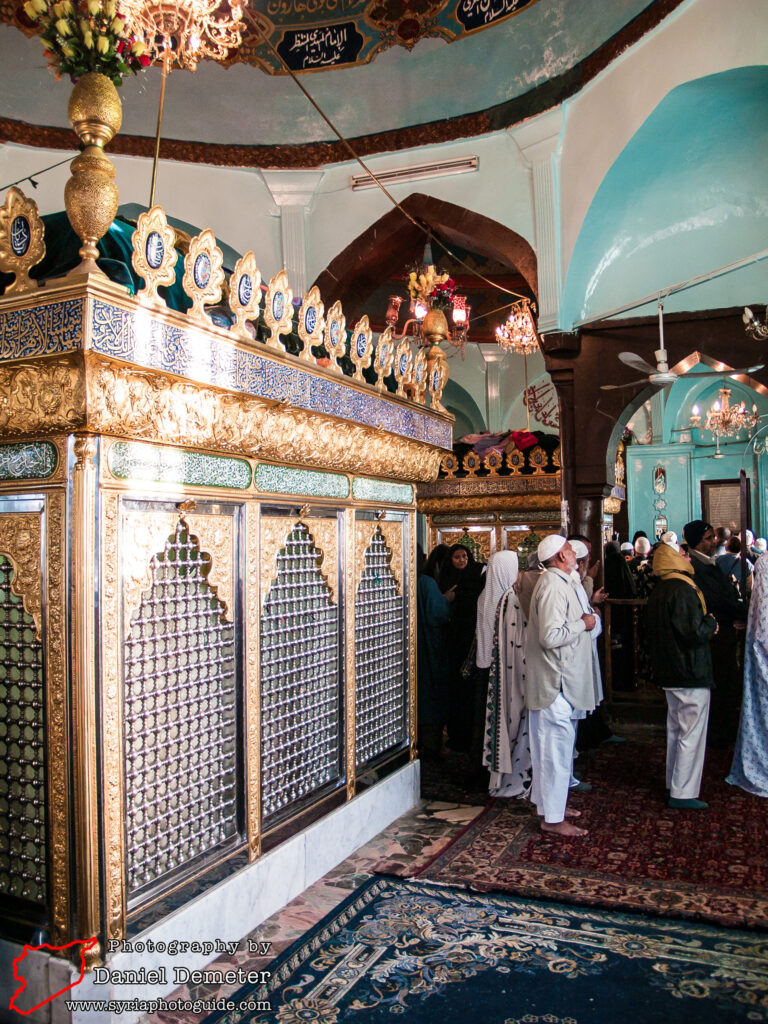
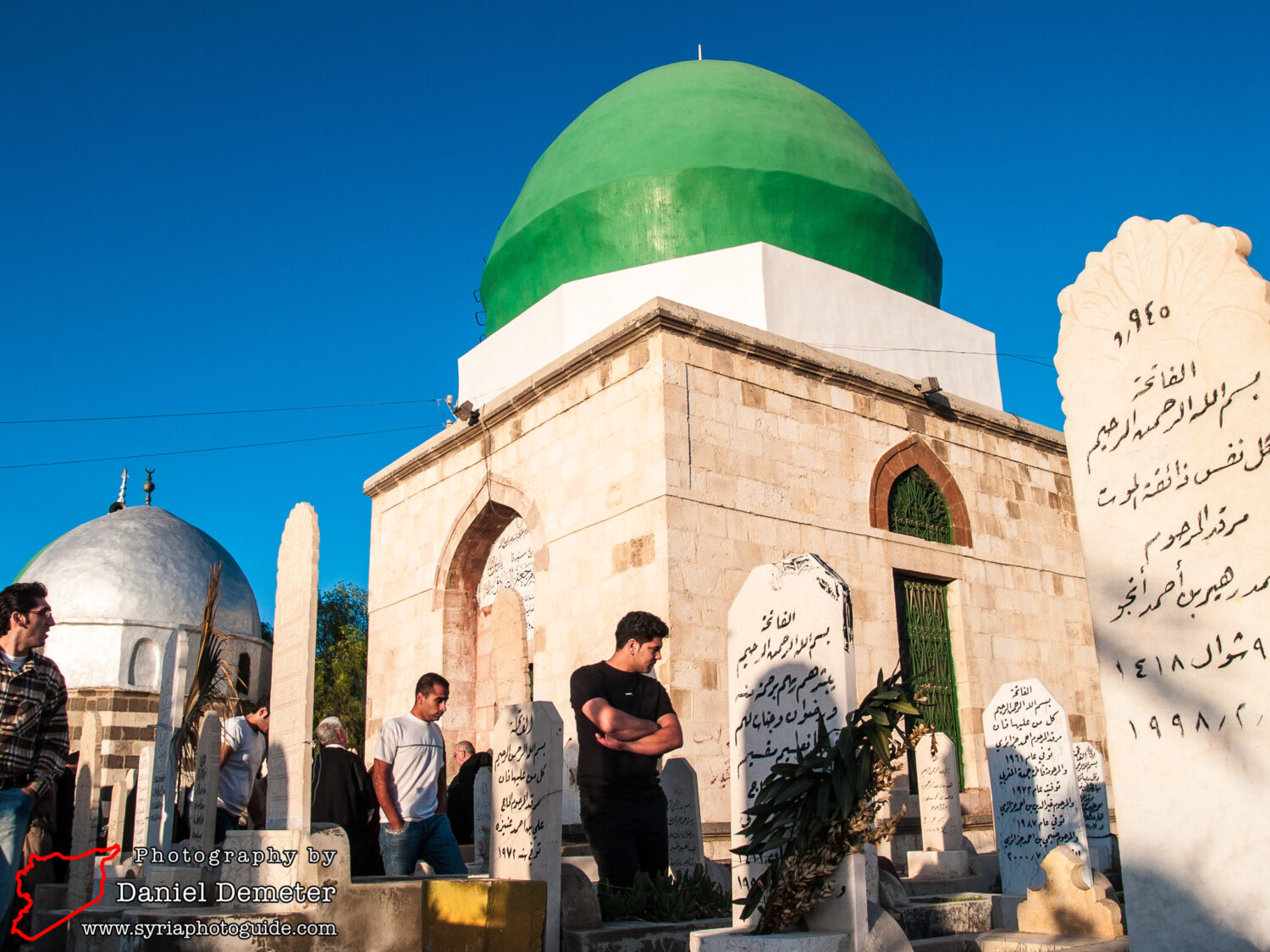
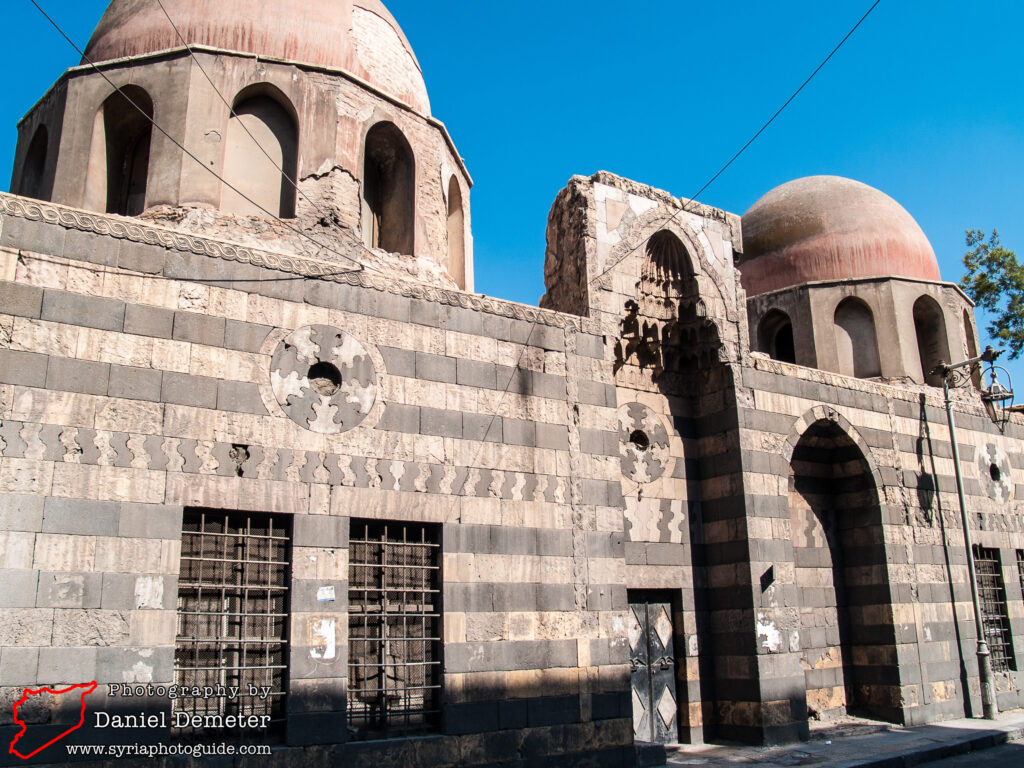
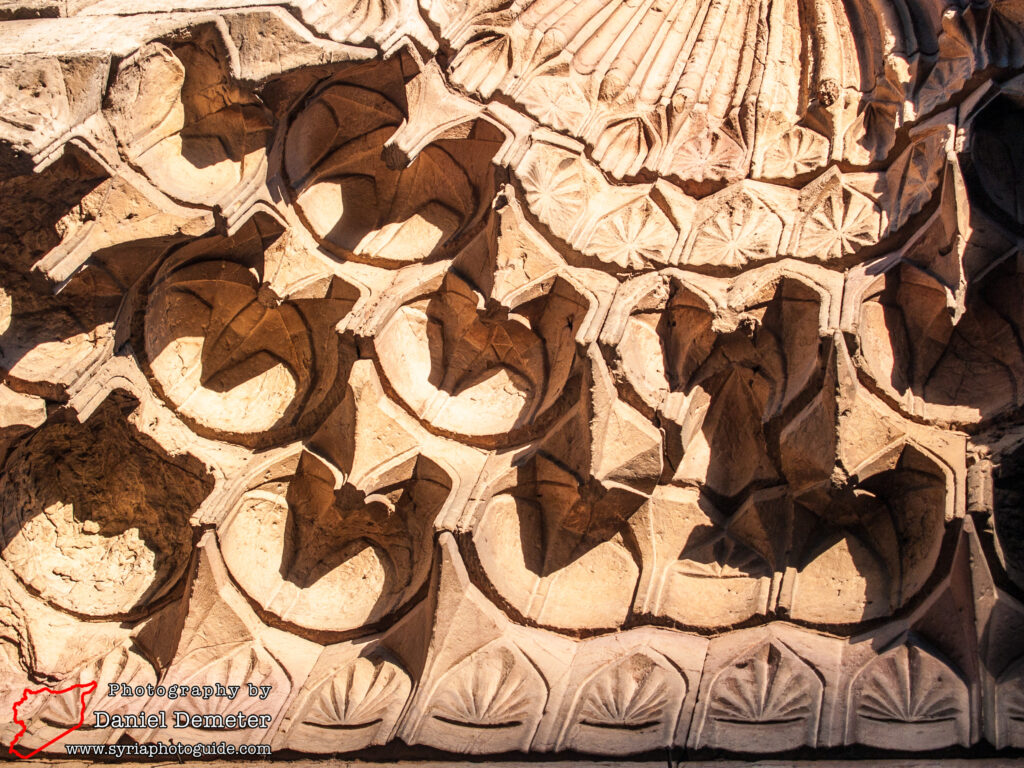
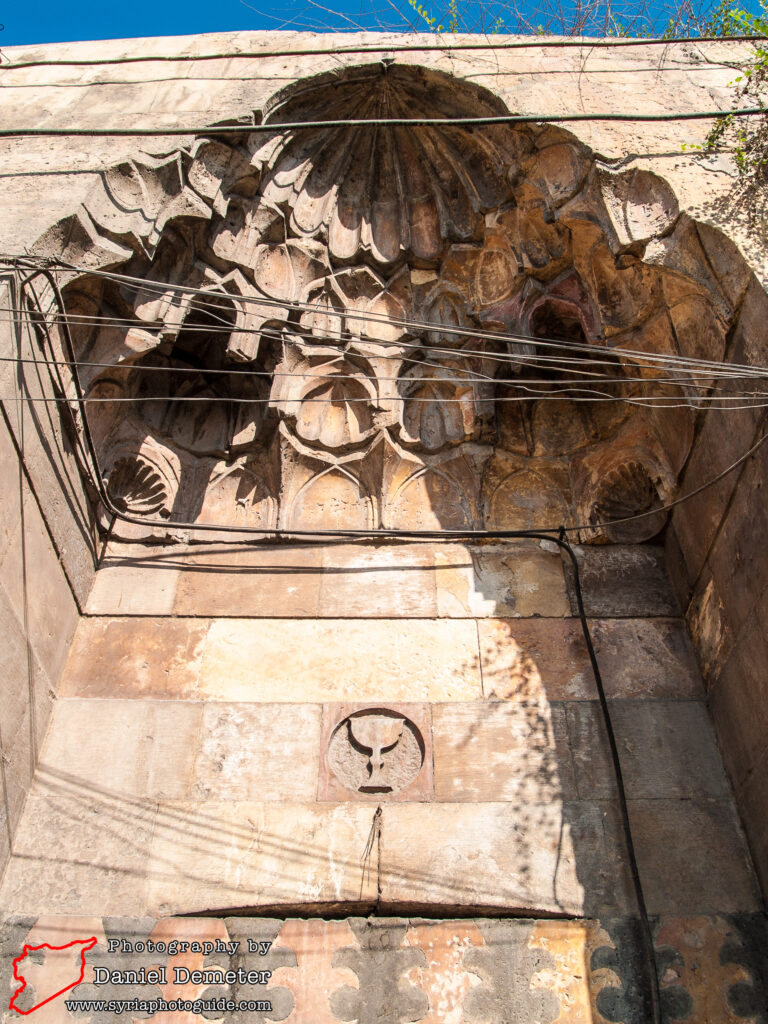
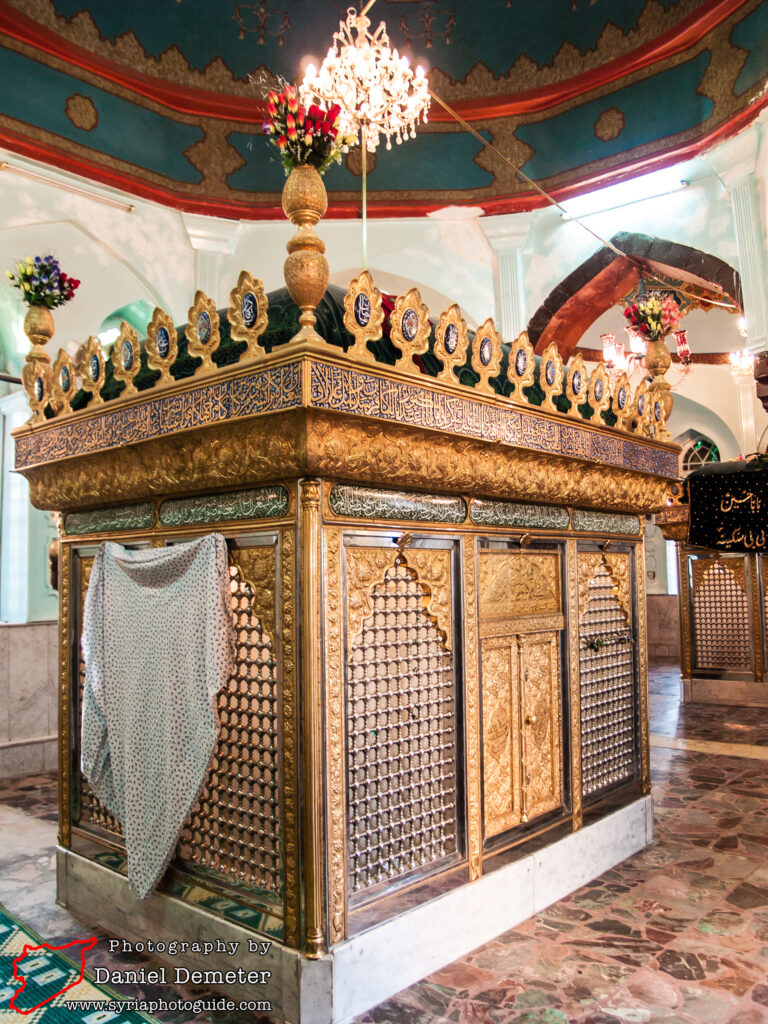
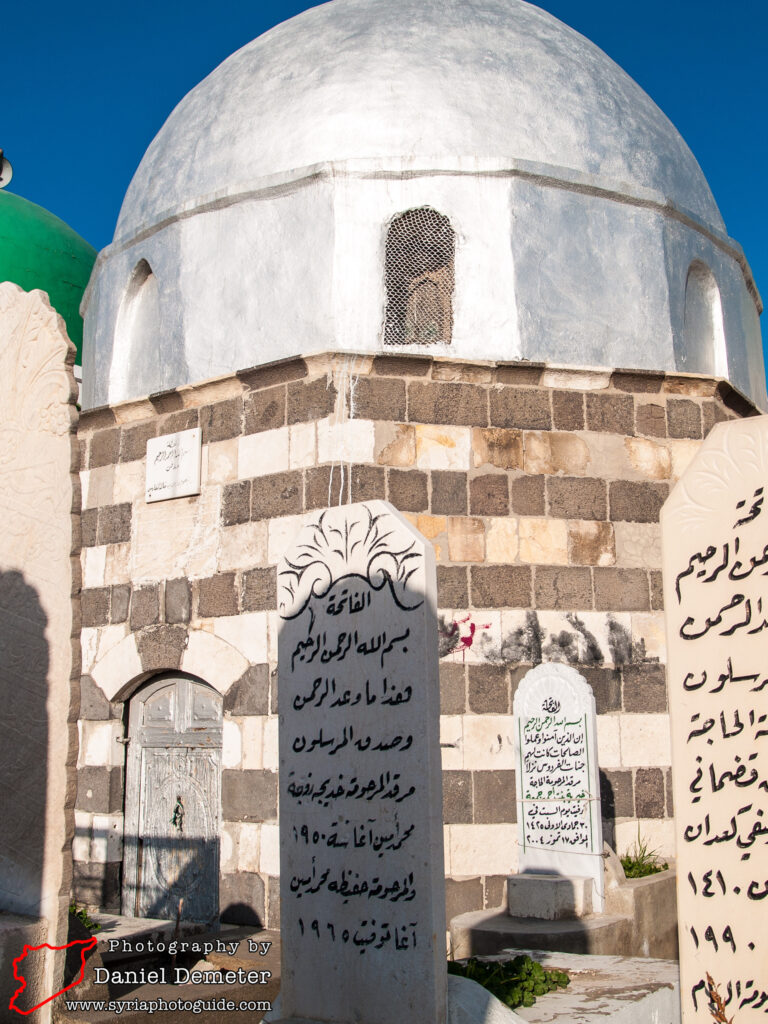
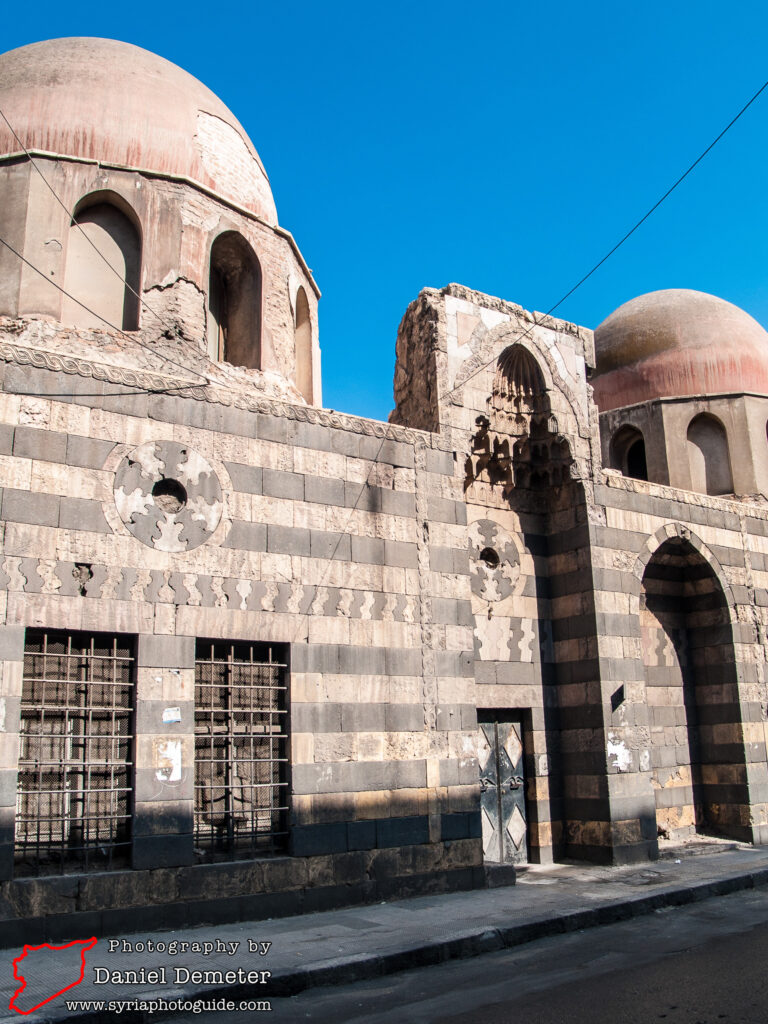

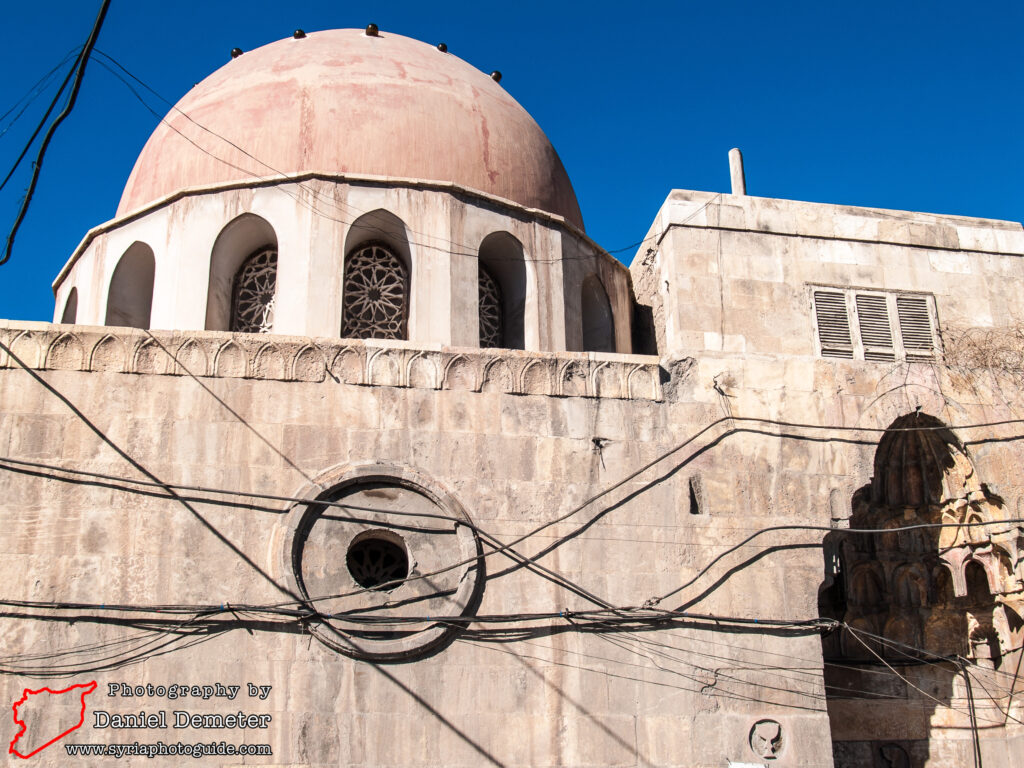
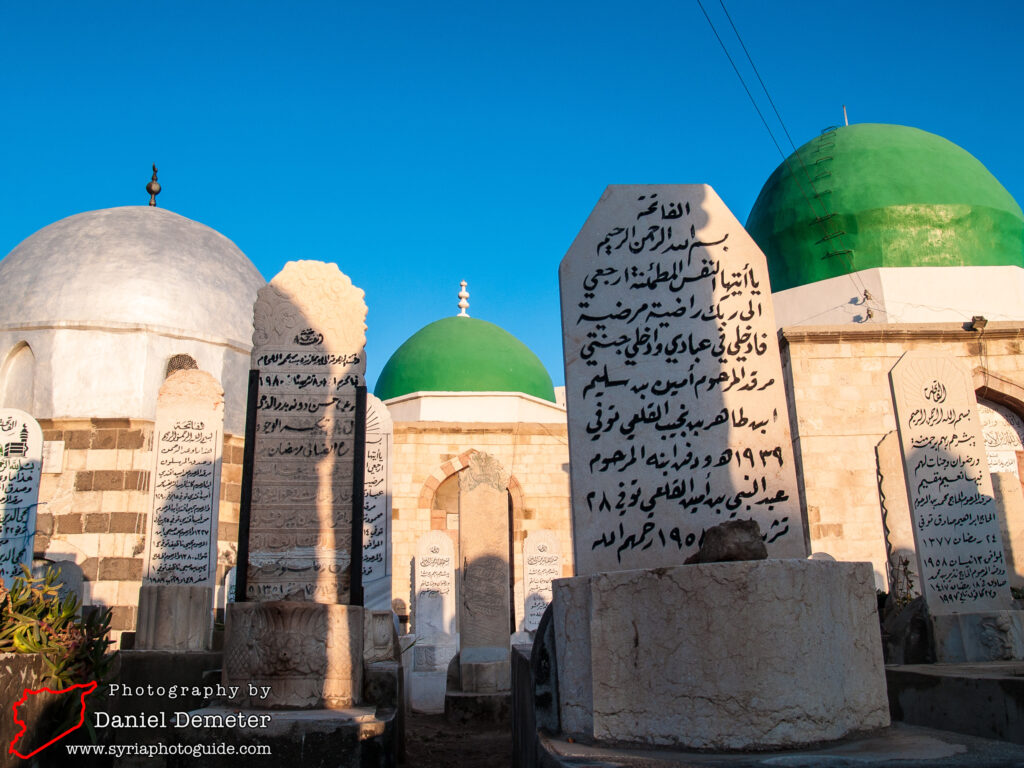
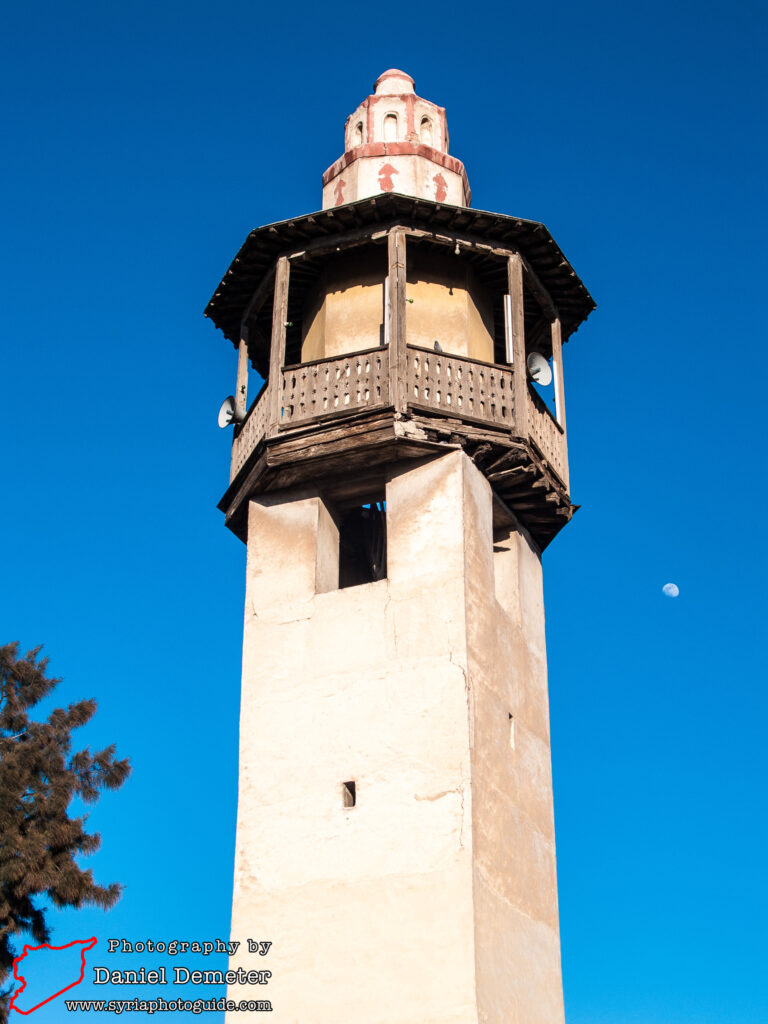
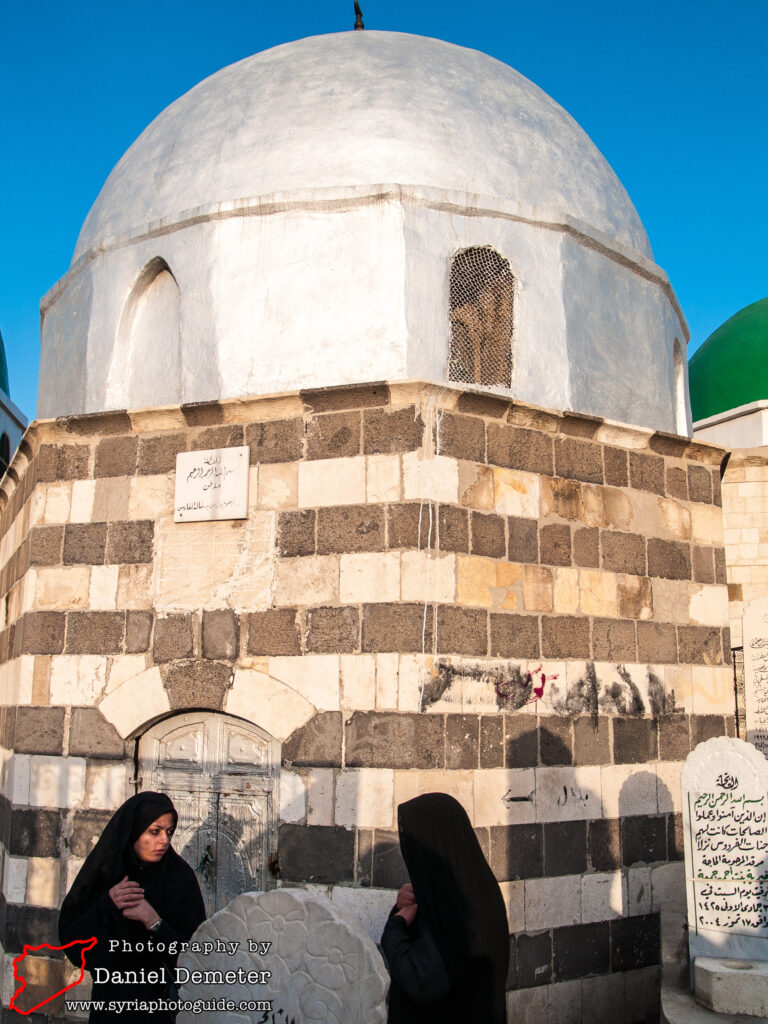
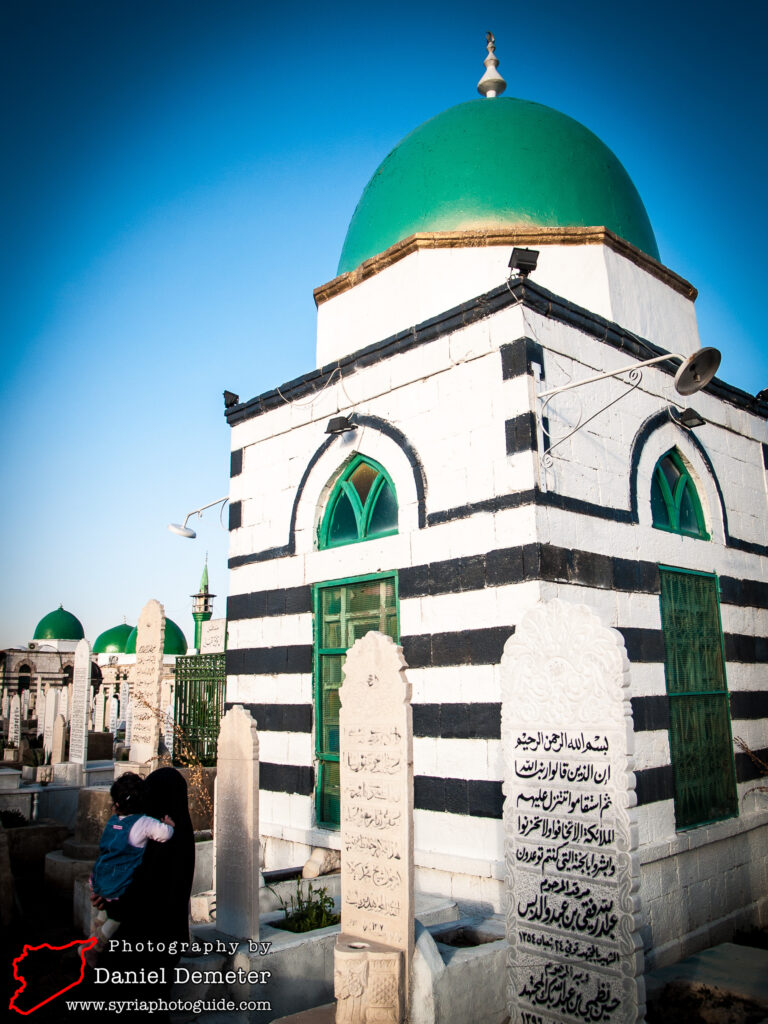
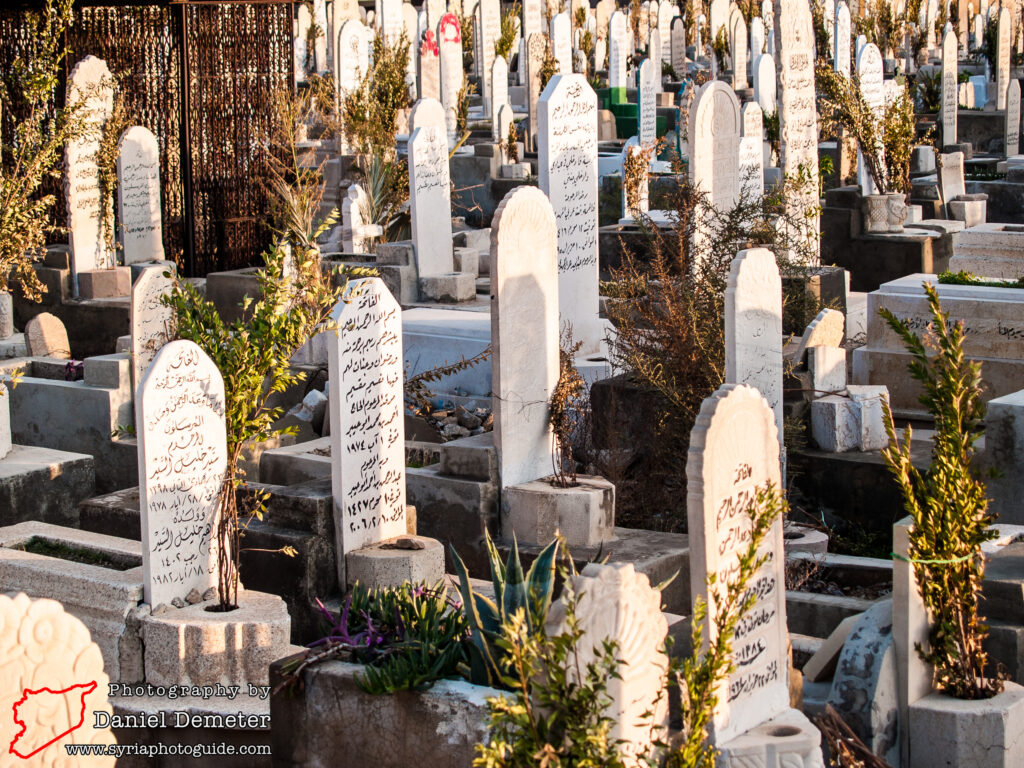
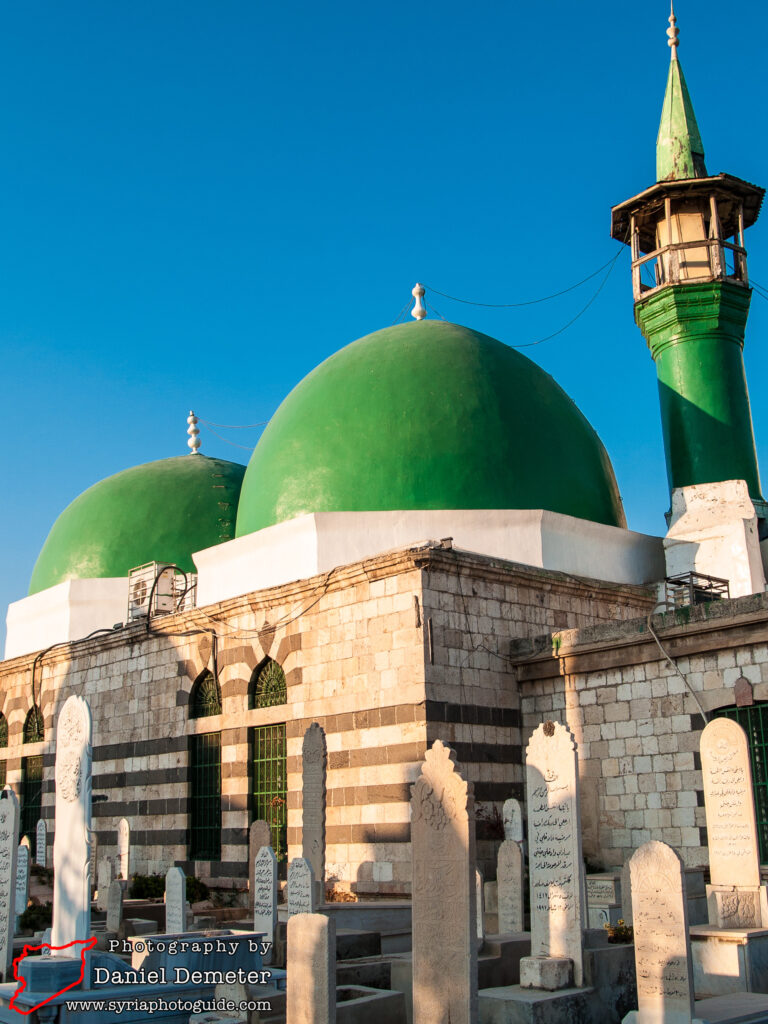
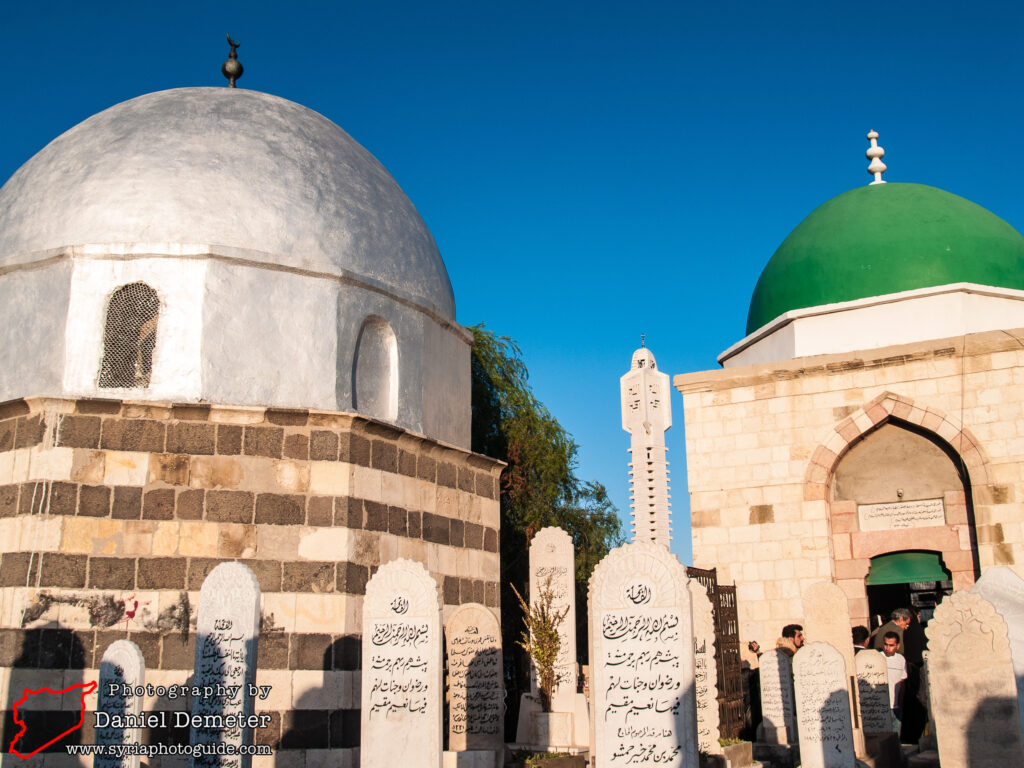
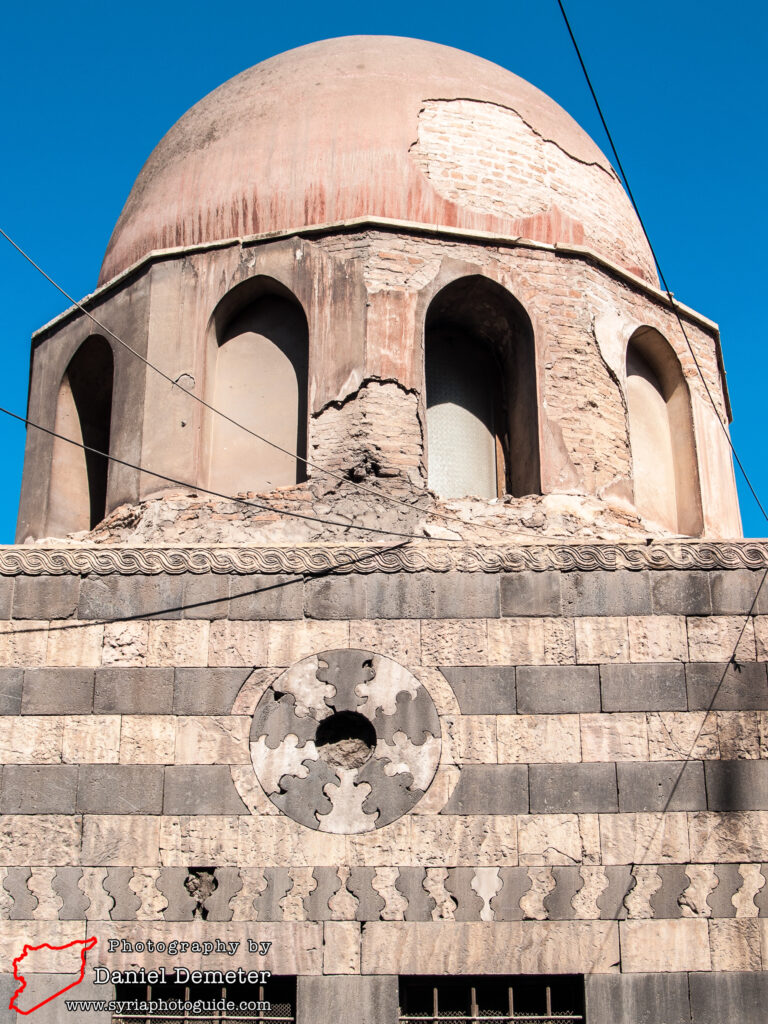
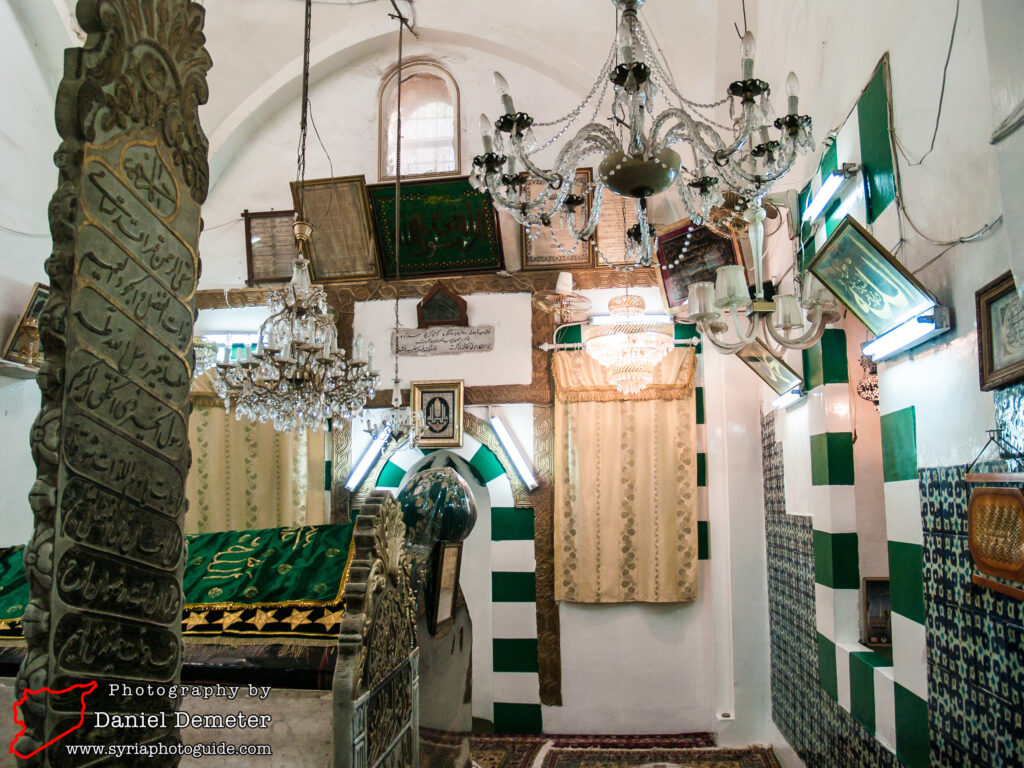
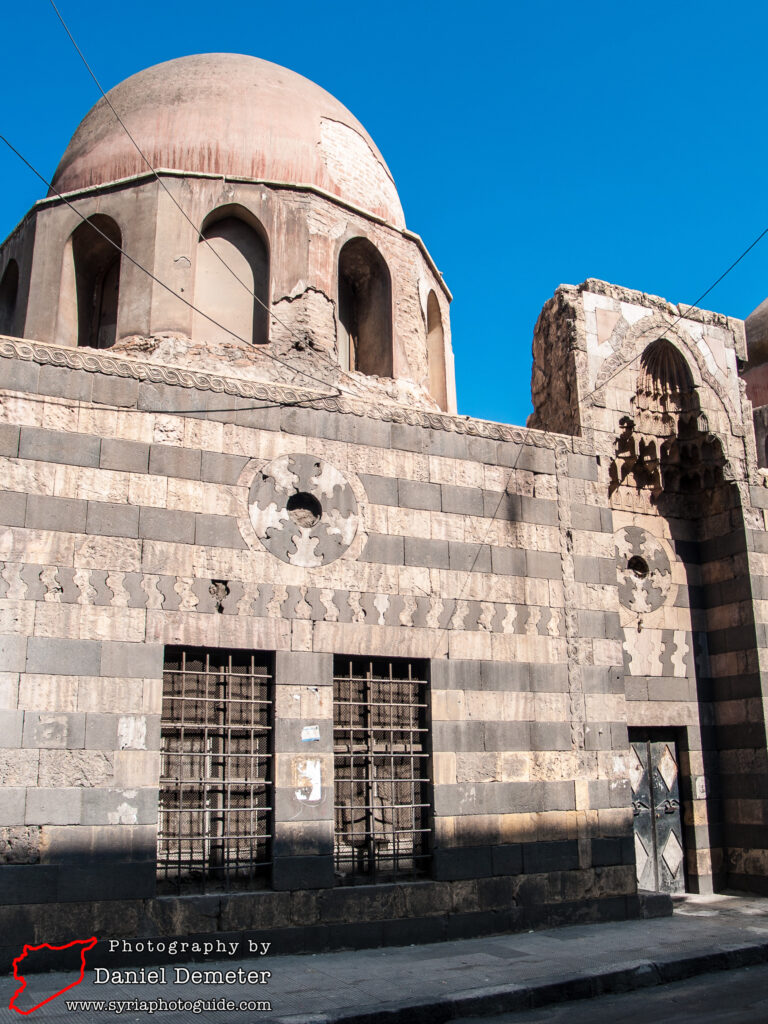
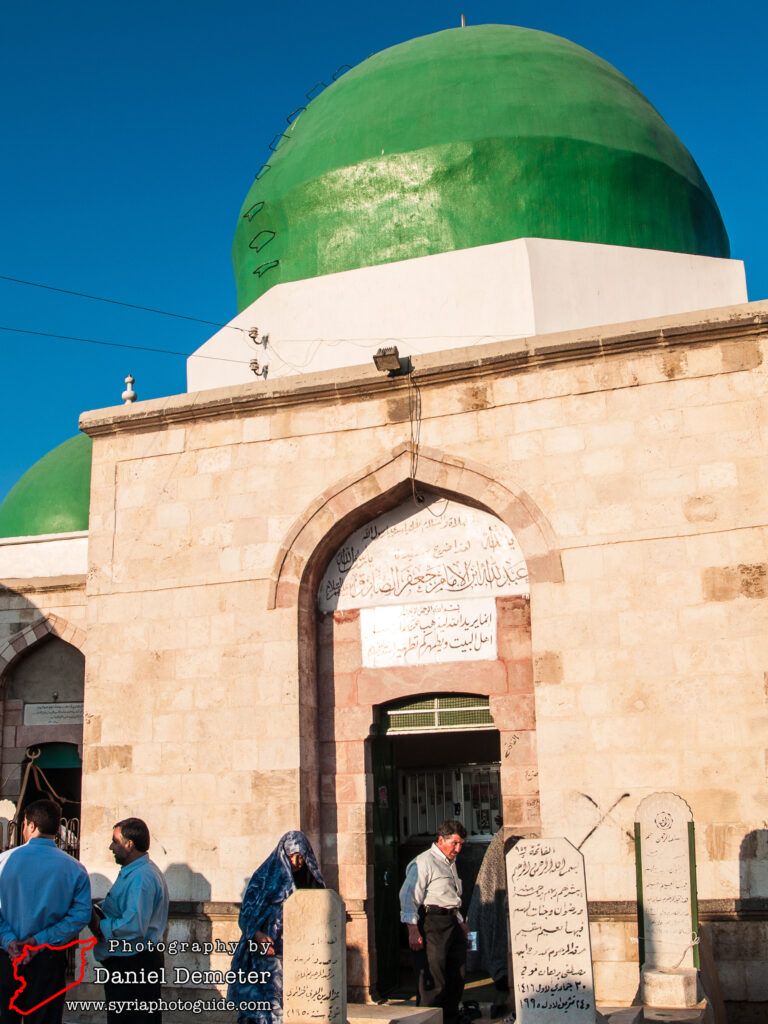
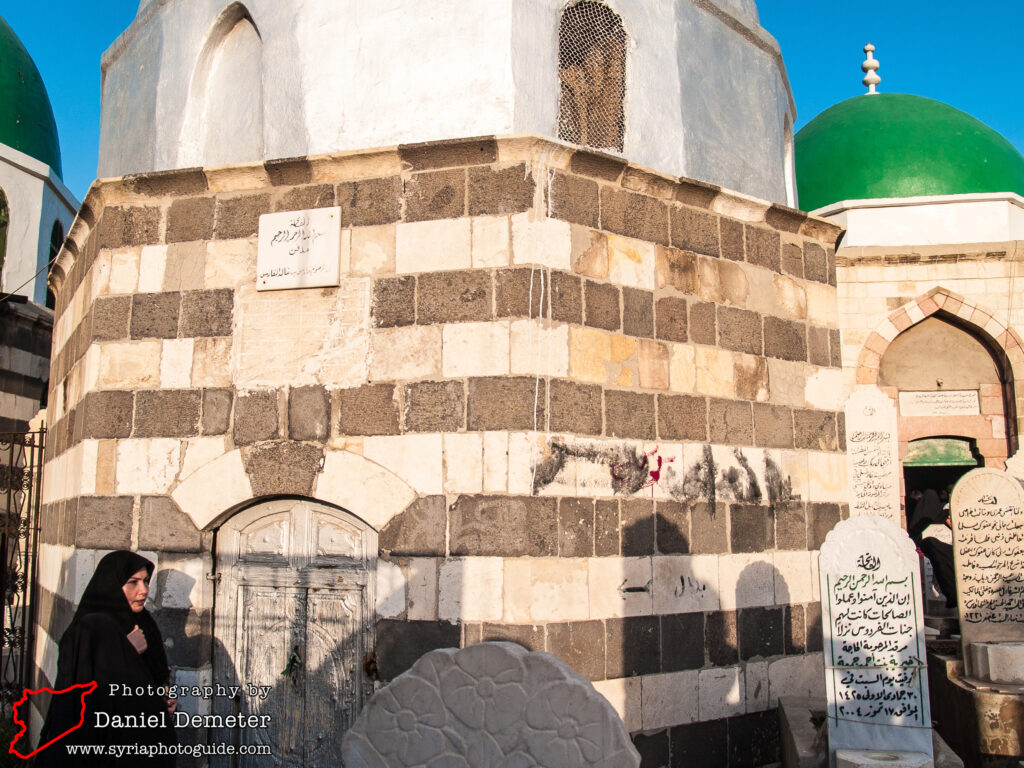
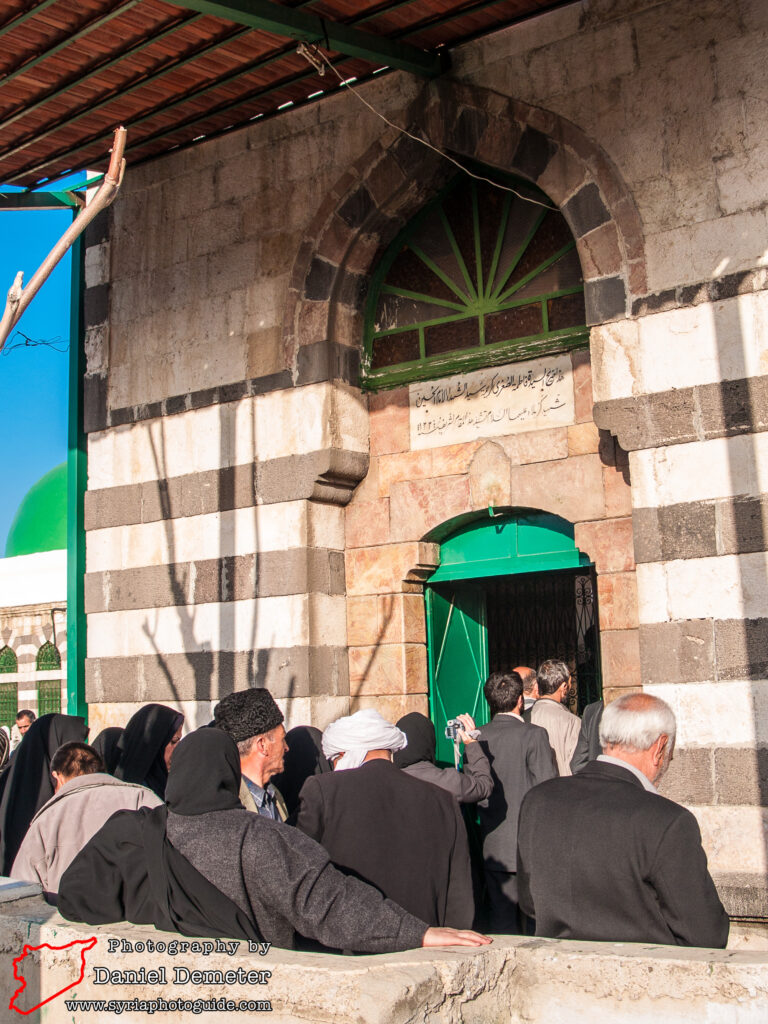
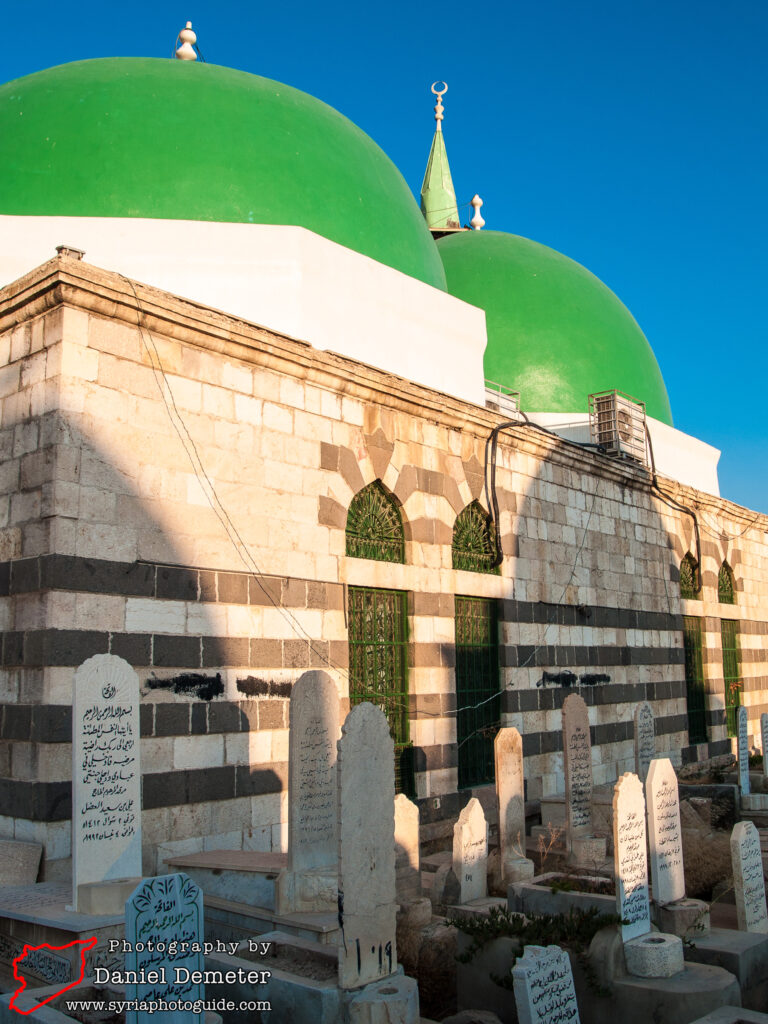
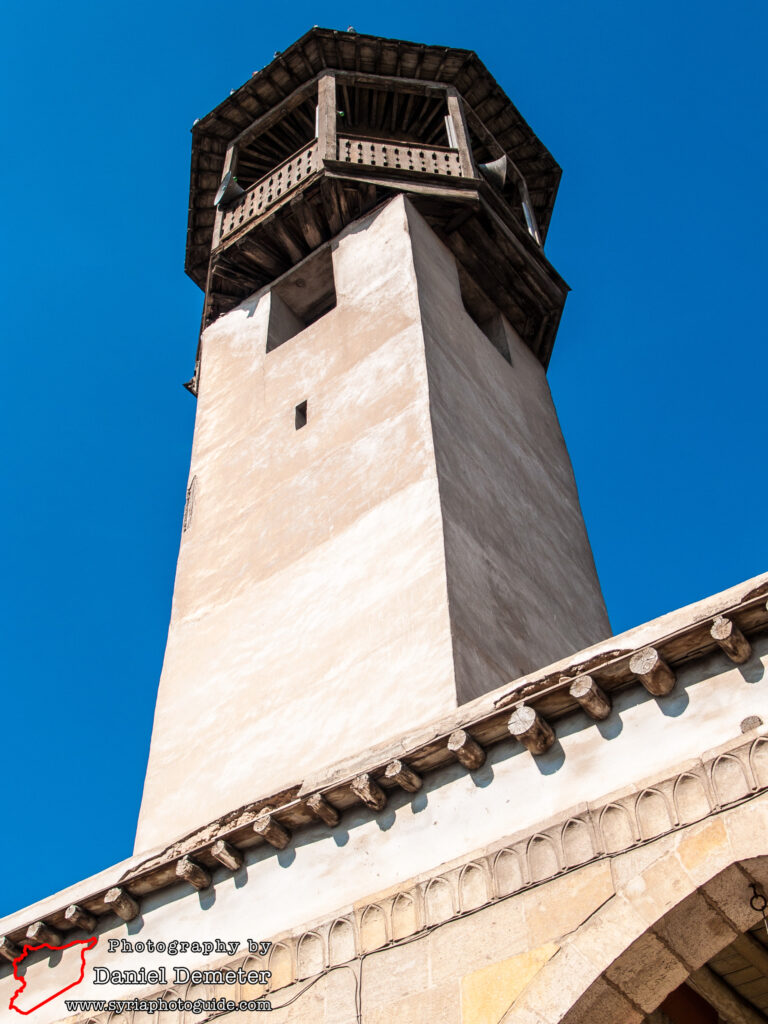
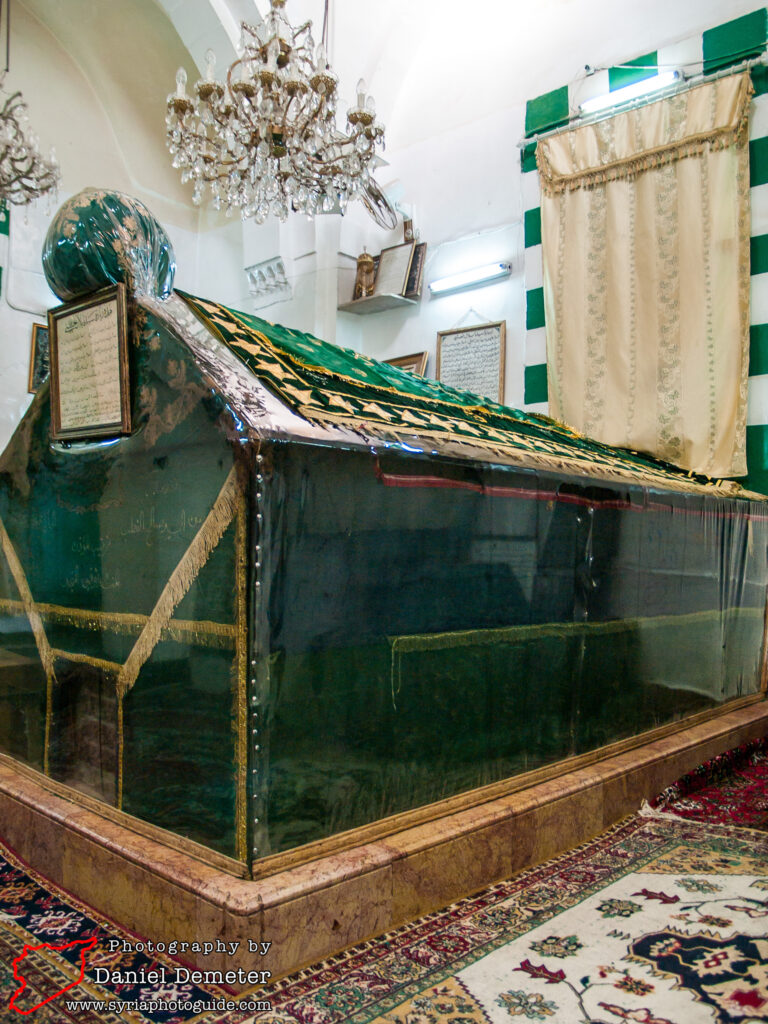
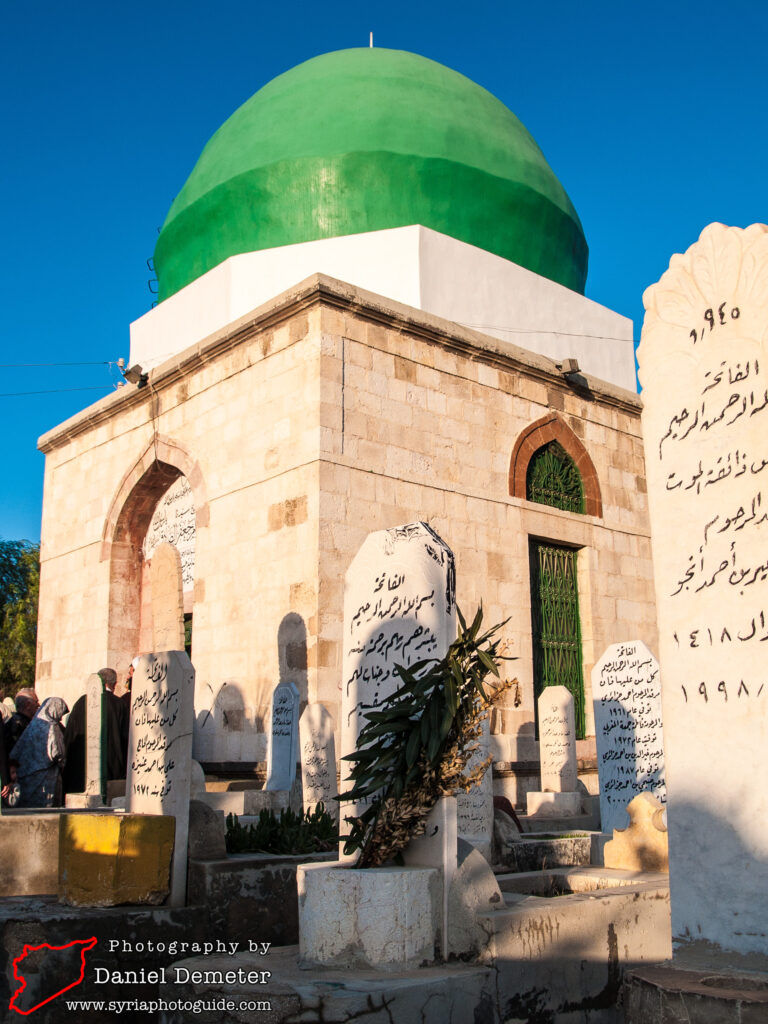
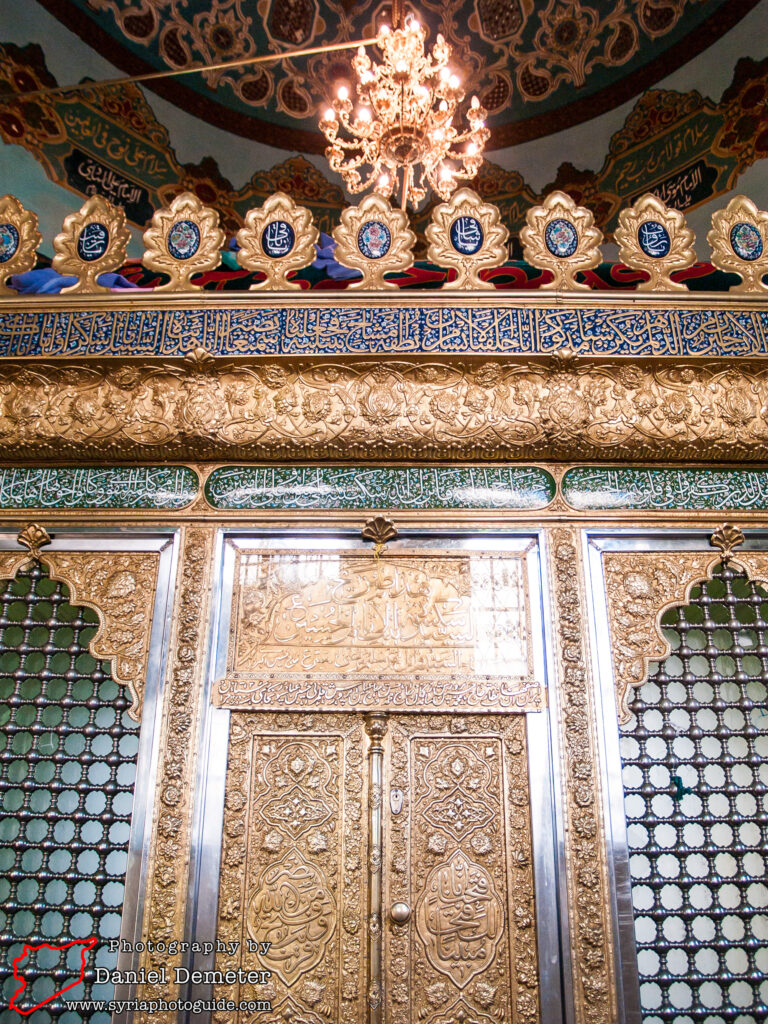
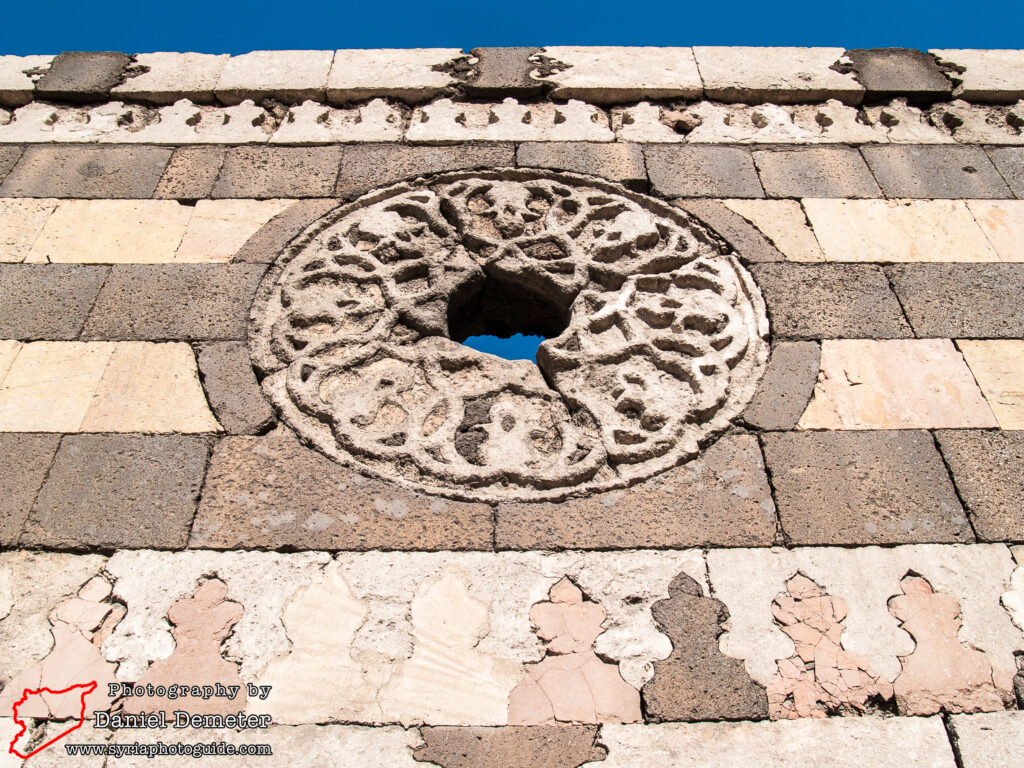
Getting There: Bab al-Saghir Cemetery (مقبرة الباب الصغير) is located south of the old city of Damascus (دمشق) approximately one hundred and fifty meters southwest of Bab al-Saghir (باب الصغير).
Coordinates: 33°30’13.00″N / 36°18’13.00″E
Transliteration Variants: Bab al-Seghir Cemetery
Rating: 5 / 10
